Truly Tokyo
A Tokyo Travel Guide
- Best Yakitori in Tokyo
Unsurprisingly, Tokyo is home to some of the world’s best yakitori restaurants. Whether you’re after a refined experience or something more down-to-earth, you’re sure to find it in Tokyo. These are a few yakitori places you should check out.

If you eat meat, it’s hard to argue with skewered, charcoal-grilled chicken. In Japan, this is known as yakitori. The chicken is grilled with either a soy-based tare sauce or salt. Yakitori can be as cheap and cheerful as you please, making a fantastic accompaniment to alcoholic drinks of all sorts. On the other hand, yakitori can be elevated to a veritable art form, given the kind of attention to detail you find in rarefied French restaurants to make the best chicken you’ve ever tasted in your life.
Something that distinguishes Japanese yakitori is the sheer variety of chicken parts available. Eating just thigh and breast is passe; if you’re feeling adventurous, why not try neck meat (seseri), reba (liver), sunazuri (gizzard), tsukune (meatball), or nankotsu (cartilage)?
Unsurprisingly, Tokyo is home to some of the world’s best yakitori restaurants. Whether you’re after a refined experience or something more down-to-earth, you’re sure to find it in this city. These are a few yakitori places you should check out.
- Kushikwakamaru (Nakameguro; mid-range) Kushiwakamaru serves affordable grilled skewers at a lively neighborhood restaurant in Nakameguro. Popular with the locals, this is a good option for a no-frills meal with friends.
- Bird Land ( Marunouchi ; expensive) Renowned Michelin-starred yakitori restaurant Bird Land in Ginza might be intimidating for some - but the Marunouchi branch is far more accessible and relaxed, and you’ll get the same amazing ingredients and service, too.
- Yakitori Tetsu ( Shibuya ; budget) Tetsu is a cheap and cheerful yakitori restaurant right by Shibuya Station. Just stick to drinks and grilled skewers - avoid everything else on the menu.
- Morimoto ( Shibuya ; budget to mid-range) For an old-school yakitori experience in the heart of Tokyo, eat some grilled chicken with the regulars at Shibuya’s Morimoto.
- Toritama ( Shinjuku ; expensive) For the finest in cockscomb-to-tail chicken eating, Toritama is one of the best. The Shinjuku branch is an outpost of their original Shirokane restaurant. It’s almost as good, and as a bonus, is way more English-friendly.
- Imai ( Harajuku ; mid-range to expensive) Think yakitori has to be cheap and cheerful? Think again. With its refined cooking and stylish surroundings, Imai in Harajuku proves that chicken skewers can be gourmet fare.

Check Hotel Availability
Destination, check-in date, check-out date.

Best Tokyo Restaurant Recommendations
- Best Restaurants in Tokyo
- Best Sushi in Tokyo
- Best Kaiseki/Kappo/Other Haute Cuisine in Tokyo
- Best Izakaya in Tokyo
- Best Ramen in Tokyo
- Best Soba in Tokyo
- Best Udon in Tokyo
- Best Tonkatsu in Tokyo
- Best Teppanyaki in Tokyo
- Best Tempura in Tokyo
- Best Wagyu in Tokyo
- Best Unagi in Tokyo
- Best Pizza in Tokyo
- Best Curry Rice in Tokyo
- Best Soup Curry in Tokyo
- Best Teishoku and Donburi in Tokyo
- Best Vegan/Vegetarian in Tokyo
Where Are These Places Located?
- Open the Tokyo map
- You will see the list of places on the left hand side. (Click the 3-line icon in the top left corner if not). Scroll down or use the map search (the magnifying glass icon) to find the place you want.
- Click the name of the place in the list. Its location pin will be highlighted on the map.
- Map pins are color coded - BLUE: Hotels / Ryokan / Guesthouses | VIOLET: Ryokan | PINK: Places to Eat | GREEN: Shops | YELLOW: Things to See and Do
- If you're using the map on your phone, open the map and then search for the name of the place. The map will then zoom in on its location.
Tokyo Vacation Checklist
- For all the essentials in a brief overview, see my First Time In Tokyo guide
- Check Tokyo accommodation availability and pricing on Booking.com and Agoda.com - often you can book with no upfront payment and free cancellation
- Need tips on where to stay? See my one page guide Where To Stay In Tokyo
- You can buy shinkansen (bullet train) tickets online from Klook - popular routes include Tokyo to Kyoto , Tokyo to Osaka and Tokyo to Hiroshima
- You can buy an eSim to activate in Japan or buy a Japan SIM card online for collection on arrival at Tokyo Narita or Haneda airports. Or rent an unlimited data pocket wifi router
- See my comprehensive Packing List For Japan
- Compare airline flight prices and timings for the best Japan flight deals . Check my guides to arriving at Narita Airport and at Haneda Airport .
- If you're visiting more than one city, you might save money with a Japan Rail Pass – see if it's worth it for you
- A prepaid Welcome Suica card makes travelling around Tokyo much easier - here's how
- World Nomads offers simple and flexible travel insurance. Buy at home or while traveling and claim online from anywhere in the world
- Do you want help planning your trip? Chris Rowthorn and his team of Japan experts at Japan Travel Consulting can help
Tokyo District Map

- Imperial Palace Area
- Tokyo Station
- Shimbashi Shiodome Hamamatsucho Shinagawa
- Akihabara Kanda
- Roppongi Akasaka
- Harajuku Aoyama
- Ebisu Daikanyama Meguro
Disclosure: trulytokyo.com is a participant in the Amazon Services LLC Associates Program, an affiliate advertising program designed to provide a means for sites to earn advertising fees by advertising and linking to amazon.com and amazon.co.uk. World Nomads provides travel insurance for travellers in over 100 countries. As an affiliate, we receive a fee when you get a quote from World Nomads using this link. We do not represent World Nomads. This is information only and not a recommendation to buy travel insurance.
The 10 Best Food Tours in Tokyo You Should Join In 2024
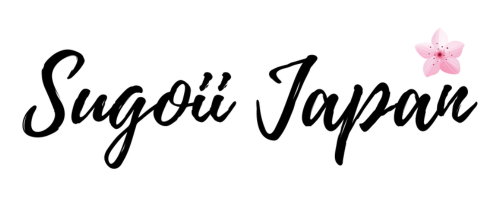
When visiting Tokyo, one of the biggest things that people look forward to the most is the gastronomic experience. Tokyo is one of the most populated cities in the world, so it stands to reason that there would be an endless supply of food joints, all with individual qualities that set them apart from the rest.
You could spend hours on end creating your itinerary, but be warned, there will be some frustrations as you tear at your hair, trying to fit in everything you want.
Or… you could opt to go on a food tour!
Food tours are one of the best ways to discover a city. You’ll get shown around by a local, you’ll learn little bits of info and history about a place that you wouldn’t know if you went by yourself, and you won’t have to worry about your itinerary at all.
We highly recommend trying a food tour around Tokyo. The food scene can get quite overwhelming to discover on your own, and you can free up your time to research other activities around Japan instead!
We’ve curated a list of the 10 best food tours in Tokyo here for you. Check it out and join your favorite tour!
1. The Midnight Diners: Tokyo Experience

The Netflix series “Midnight Diners: Tokyo Stories” took the world by storm when it dropped on Netflix, taking viewers on an eclectic experience through the streets of Tokyo at night with some of the most peculiar and exciting locals.
If you want a real-life similar experience, this food tour is right up your alley.
Bar hop around Kichijoji , rubbing shoulders with the locals whilst drinking delicious Japanese beverages and learning bits and pieces about the vibrant neighborhood.

Kichijoji is home to an array of small bars and gastro pubs that have been watering holes for the locals since the 1950s. The majority of them are located in and around Harmonica Yokocho. Whilst you could visit this alley yourself, visiting it with a tour guide who knows the owners, the locals, and the streets like the back of his hand is an experience unlike any other.
Highlights :
- 4 hours of bar hopping through Harmonica Yokocho including opportunities to try Japanese beverages such as cocktails, oolong-shu, whisky highballs, and umeshu plum wine
- An all-you-can-eat dinner segment
- Insights from a local tri-lingual guide
- A thorough introduction to Tokyo’s nightlife scene
2. Tasting 6 Mini Bowls of Ramen at 3 Award-Winning Shops
Ramen is a top contender of one of the most popular Japanese dishes around the world. Japan’s take on traditional noodle soup is a super-rich and flavorsome broth, skilfully made thin ramen noodles and minimal toppings that come together to create a delicious, heart-warming bowl of ramen.
This ramen-tasting tour will take you around the neighborhoods of Shibuya and Ebisu, sampling some of Tokyo’s best ramen offerings. All three ramen shops visited are superior award-winning shops, however, you won’t know from the humble shop fronts and warm, welcoming nature of the chefs.
Frank is the tour guide who has a wealth of knowledge of local ramen and local people. He is also a popular Japan by Food host and will impart you with a fun and exciting experience where you’ll learn about the different varieties of the beloved Japanese dish.
The ramen restaurants will have their standard offerings, but will also allow customizable options so you can pick and choose the toppings that excite you.
Make sure you come hungry to this food tour because you’ll be trying a whopping 6 different bowls!
- 3 hours of a ramen-tasting tour
- Customisable options, including toppings
- 6 mini bowls of traditional ramen
- Tips, tricks, and insider knowledge from a ramen expert
3. Shinjuku After Dark Izakaya Tour

Shinjuku during the day is a vibrant, bustling city that’s full of life. Colorful billboards, hundreds and thousands of people crowding the sidewalks, and loud Japanese announcements fill the air and the streets.
Shinjuku after dark is another story. The locals come alive at night, with the traditional izakaya bars filling up quickly before the sun sets. During the day, you’re fighting the crowds at the shopping centers and the restaurants, but at night, you’re rubbing shoulders with the locals at the gastropubs.
In this tour guide, you’ll get to know about the Shinjuku nightlife as if you were a local. Look through the glitz of the Shinjuku that you read about in blogs, and you’ll find yourself immersing yourself in the lively drinking culture of Shinjuku at night.

You’ll be experiencing grilled Japanese dishes, paired with Japanese-tasting sake, beer, and other alcoholic beverages that will wash down the food surprisingly well.
You’ll spend some time in the red-light district of Tokyo, Kabukicho, before you make your way over to a locally-known drinking district that is home to an impressive 200 tiny drinking bars, all crammed up right next to one another.
Come prepared to drink until the AM, because the crowds here can drink!
- Visit the best local restaurants and bars in Shinjuku whilst avoiding tourist traps
- Experience popular Japanese beverages such as sake, beer, and cocktails
- Visit Tokyo’s red-light district, Kabukicho
- Visit a local bar district with over 200 different bars
4. Wasabi Farm Tour in Okutama, Tokyo

Are you a fan of wasabi, the distinct green paste that offers a unique burning sensation when even the slightest bit touches your tongue?
If so, this wasabi farm tour will open your eyes to just how intricate the growing and proper eating technique of wasabi is.
David Hulme is a former journalist from Australia who moved to Okutama in 2014. He is considered a local now and holds extensive knowledge about the area as well as wasabi.

In this tour, you will discover that real wasabi root is indeed quite rare and expensive, even in Japan. The green wasabi paste that you normally dine on at sushi restaurants is actually made of dyed horseradish!
You will be able to witness an authentic wasabi patch and the structure of how it grows, see how the water is regulated, and, depending on the weather and the circumstances, you might even be able to try using a dedicated wasabi farming tool, called a “kazusa”, to harvest the plant yourself!
You’ll also get to clean your wasabi root, practice grinding it, and of course, try the freshest, tastiest wasabi you’ll ever lay your hands on.
- Learn about the deep, intricate, and long history of wasabi
- Hands-on experience in harvesting wasabi
- Try hours-fresh wasabi – you can’t get this anywhere else in the world!
If you want more hands-on activities, you can also check out our list of the best cooking classes in Tokyo .
5. Ultimate Food in Shibuya Tour

Shibuya is famous for many things, but it’s arguably the most famous for its food.
The bustling streets of Shibuya are the stomping ground for local foodies as well as foodie tourists from all around the world. Every corner you turn, every street you cross, you’ll come across a restaurant that’s a favorite for many.
Shibuya is huge and thus, between the option of touring it alone without any local knowledge versus touring it with a local knowledgeable guide – the choice is quite clear, isn’t it?

In this Ultimate Food in Shibuya tour, you’ll be taken to eat at a sushi joint, authentic izakaya, yakitori, takoyaki, and even a grill-it-yourself wagyu beef restaurant!
You’ll also get some time in between to digest at a Japanese arcade center, which is an entire experience in itself!
To finish off the tour, you’ll find yourself indulging in some delicious Japanese wagashi sweets. This tour is the ultimate food tour of Shibuya.
- 4 hours of touring the busy, bustling streets of Shibuya, with photo opportunities with the neon lights, bars, shops, and crowds
- Learn about the local youth culture of Shibuya
- Play some crazy games at a Japanese arcade center
- Eat a variety of delicious authentic Japanese foods at restaurants currently unknown to tourists
If you want to explore more similar places in Tokyo, make sure you also read our blog post about the best street food spots in Tokyo !
6. Tsukiji Fish Market Tour with Breakfast

For many people visiting Tokyo, Tsukiji Fish Market is one of the highlights of their trips, and it’s not hard to see why! This impressive bustling fish market is a jam-packed center full of lively fishmongers, enthusiastic stall sellers, crowds of excited visitors, and an electric buzz in the air.
The famous tuna fish auction has moved over to Toyosu, however, the Tsukiji Fish Market is still thriving and is still as fun as ever to visit.
This tour includes an initial coffee run at an artisanal coffee shop to get caffeinated before making your way through the alleys of Tsukiji with a friendly and knowledgeable guide. The highlight of this tour is knowing that you’re being shown the best places to get fresh seafood delicacies and street foods.
Learn about some insider tips on where to get the freshest fish and tastiest skewers, and also where to buy the best ingredients for later. There will be opportunities to purchase souvenirs from this market as well, so make sure you have plenty of cash on you!
- Experience the Tsukiji Fish Market with over 65 fish market vendors
- Try the freshest sashimi and delicious Japanese seafood delicacies
- Visit a shrine with a history of over 300 years
7. Tokyo Walking Food Tour in Nakano and Koenji

If you’re keen on a low-key, short walking tour of a side of Tokyo most people don’t get to experience, then this walking food tour is right up your alley.
The Tokyo Walking Food Tour in Nakano and Koenji will take you through these two neighbourhoods of Tokyo that don’t nearly get as much attention as favorites such as Shinjuku, yet exude just as must, if not more, charm and character.
The laidback ‘west’ of Tokyo offers a unique food experience through traditional authentic Japanese restaurants amongst an alternative and hip culture.

Koenji is a ‘happening’ destination for live music performances as well as vintage stores, whilst Nakano is a hub for all things otaku culture.
Both areas offer some amazing gastronomic experiences as well as funky retro shopping arcades, yokocho, and picturesque residential photo opportunities.
- 2-hour walking tour of the electric neighbourhoods of Nakano and Koenji
- Experience a range of delicious traditional Japanese restaurant foods as well as street foods
- Learn pockets of information about the local areas
8. Tokyo Yakitori and Ramen Tour

This is definitely one of the best food tours in Tokyo! Let’s see why.
Yakitori is a Japanese meal that is often eaten amongst lively conversation and fresh cold beer. Ramen is a Japanese dish often eaten quietly, with a deep appreciation for the delicate intricacies that have been channelled into one delicious, heart-warming bowl of noodles.
Put the two of them together and you’ve got both ends of the spectrum of Japanese dining!

This yakitori and ramen tour will take you through the streets of Shinjuku, introducing you to some of the most delicious grilled yakitori in Tokyo. You will get to choose whether you pair it with shichimi togarashi, wasabi, or yuzukosho – or why not try it with them all?
Yakitori is often eaten alone, however on this tour, you will be experiencing jointly enjoying yakitori and ramen at the same time!
Your guide is a ramen expert with several accolades under his name; from visiting over 1300 ramen shops to writing books about ramen to even talking about ramen on TV, he’s done it all!
- A 3-hour private yakitori and ramen tour with a ramen expert
- Included in this tour are five delicious yakitori skewers and two drinks
- Experience eating both yakitori and ramen at the same time like the locals
- Rub shoulders with locals
9. Tea Ceremony Experience in Asakusa

The gorgeous Sensoji Temple in Asakusa is one of the top attractions in Tokyo, and when you visit this neighbourhood, the traditional atmosphere will stand out amongst the lively modern cities.
Asakusa is considered Tokyo’s traditional district, and there are tea houses that exist today where visitors can experience an authentic tea ceremony, transporting you back in time to Olden Japan.

During this tea ceremony experience, you will be invited to a tea house, where you will learn about the art and history of the Japanese tea ceremony and how intricate the art of matcha tea preparation is.
The tea ceremony will also include delicate wagashi, which is a traditional Japanese sweet.
For a small extra fee, you can also opt for the option to wear a kimono during the ceremony as well!
- Learn about the beautiful history of the Japanese tea ceremony
- Enjoy authentically prepared matcha tea and sweets
- Prepare your matcha
- For a small extra fee, wear a beautiful kimono during the ceremony
For more options, you can check out this article about the best Japanese Tea Ceremonies in Tokyo !
If you love Japanese sweets, join one of these best Wagashi making classes in Tokyo .
10. Kawaii Food Tour in Harajuku

Kawaii culture in Japan has somewhat of a cult following around the world, and its eye-catching vibrant people and aesthetics make it endlessly fascinating for anyone visiting Japan.
There is nowhere better to witness Kawaii culture than in Harajuku, the Kawaii capital of the world.

A huge part of Kawaii culture is the food that has exploded onto our Instagram feeds over the years. Colorful, zany, eye-catching, delicious-looking sweets from Harajuku have tempted travellers worldwide to book their tickets to visit this exhilarating area of Japan.
This Kawaii food tour will take you through the streets of Harajuku and will not miss a beat. You will get to explore the wackiest, cutest, most unique Kawaii foods that Omotesando and Harajuku have to offer. From the colorful sweets you see online to hidden gems of the area known only to locals, you’ll get to discover them all!
- Experience Harajuku and Omotesando with a guide who knows what’s popular and what’s worth a visit
- Take photos of some amazingly colorful and Instagram-worthy foods
- You’ll even get to try traditional snacks from Niigata here!
I hope you enjoy this curated list of the best food tours in Tokyo!
Tokyo is an endless city of amazing foods that you will fall deeper and harder in love with, everything you take a bite of its food.
We highly recommend the food tours here because not only do you get to taste the delicious local cuisine but each one some with a guide who is passionate and knowledgeable about the Tokyo food scene and will elevate your experience even further.
We hope you enjoyed reading this and would love to hear if you’ve had a wonderful experience with any! If you want to try similar activities, make sure you also read our lists of the best food tours in Kyoto and the best food tours in Osaka .
Leave a Reply Cancel reply
Your email address will not be published.
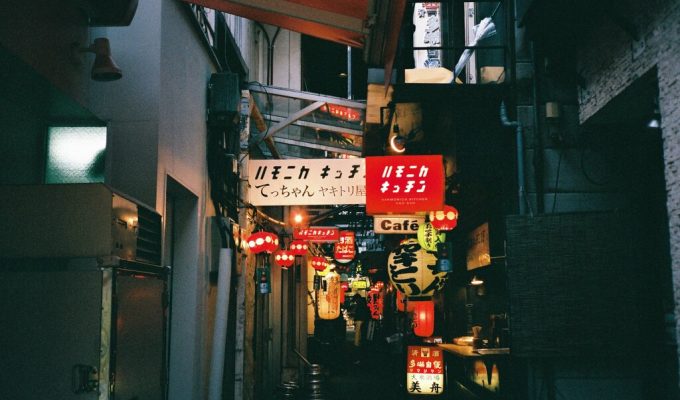
Explore Kichijoji in Tokyo – Full Area Guide You Have To Read!
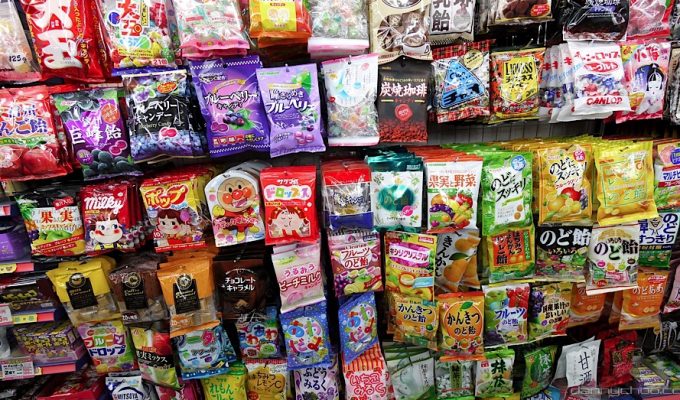
10 Popular Japanese Candies You Definitely Need To Try
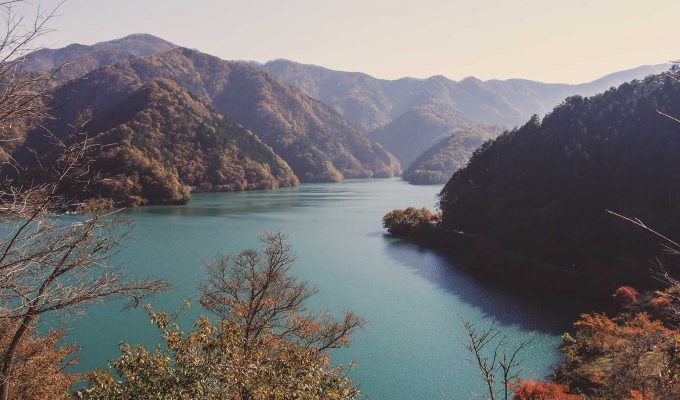
Okutama Japan – Discover This Amazing Natural Oasis Near Tokyo
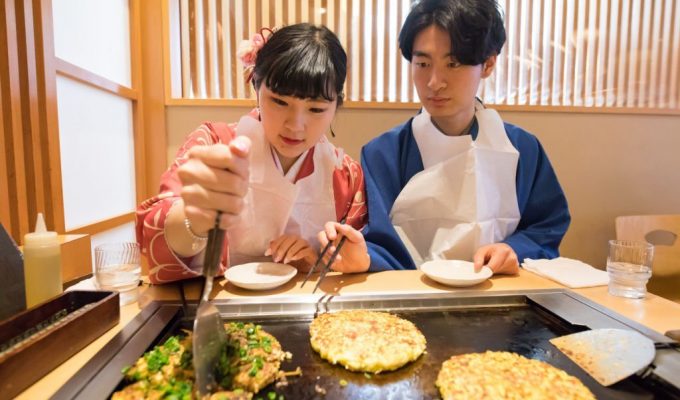
The 5 Best Cooking Classes In Osaka You Should Try In 2024
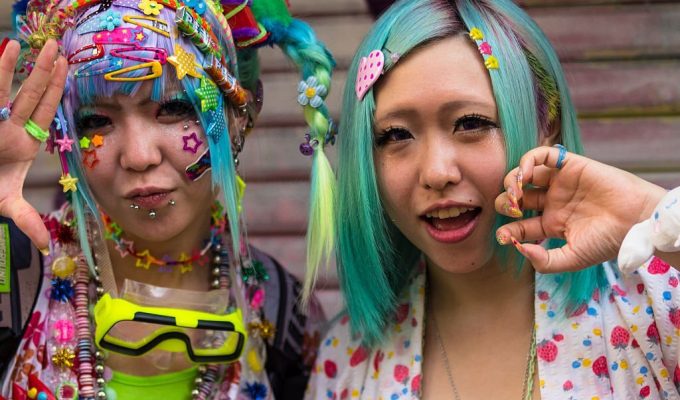
Harajuku Fashion Culture – History, Styles, New Trends, Best Shops
The 10 coolest & most unique hotels in japan.
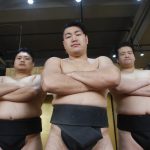
Welcome To The New Sumo Restaurant In Tokyo: Asakusa Sumo Club
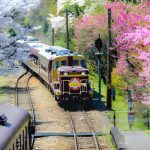
A Complete Guide To Enjoy Peach Blossom In Japan
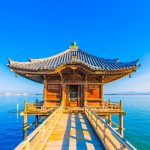
Discover Otsu – 10 Things To Do In This Beautiful Hidden Town Near Kyoto
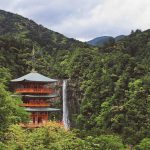
Japan Travel Blog 2024 – The Ultimate Guide To Visit Japan
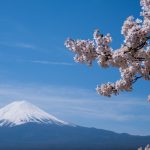
Cherry Blossom Forecast Japan Spring 2024 – When To Enjoy Sakura

Zao Onsen – Get Off The Beaten Track And Visit This Gorgeous Onsen Town
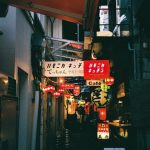
The 7 Best Onsen Towns Near Kyoto You Have To Explore
- Skip to content
- Skip to primary sidebar

Food Tours Japan
Eat, Drink & Cook in Japan
Tokyo Food Tours: 12 Best Gourmet Travel Experiences
Taking a food tour in Tokyo is essential for any trip to Japan. With more Michelin-starred restaurants than anywhere else in the world, Tokyo is the world’s number one cuisine city.
For alternative Tokyo gourmet travel experiences, check out:
- Tsukiji Outer Market Tours – experience Tokyo’s atmospheric old fish market district
- Toyosu Market and Tuna Auction Tours – visit the world’s biggest seafood market
- Tokyo Ramen Tours – ramen tasting, eat like a local, vegan and luxury Wagyu beef experiences
- Sake Tasting and Brewery Tours – drink and learn about Japan’s famous sake
- Tokyo Cooking Classes – discover washoku (Japanese cuisine) hands-on
I’ve selected the 12 best Tokyo food tours; let’s dive straight in!
1. Tokyo Private & Personalised Local Food Tour

Flexible start times and meeting points for a tailored Tokyo food tour to suit your needs.
- Discover where the locals eat at markets, shops, street food stalls and restaurants
- Learn about Tokyo’s food and drink culture
- Taste new Japanese dishes and regional specialities
- Get insider recommendations on where to eat your favourite Japanese food
- Try unique flavoured Japanese soft drinks from a vending machine or convenience store
- Includes eight to ten food and drinks, a private and personalised experience, and a walking tour
- Location: Flexible – near your accommodation or a place suggested by your host
- Duration and start time: 3 hours, flexible – choose your own start time
Book Tokyo Personalised Food Tour >>
2. Best of Shibuya Walking Food Tour Tokyo

Get off the beaten track and experience Shibuya’s food and drink scene like a local.
- Eat Kobe wagyu beef skewers, okonomiyaki (savoury pancakes), assorted sushi and dessert
- Explore Shibuya’s hidden back alleys and visit restaurants away from tourists
- Wander through a department store food hall and be amazed at the variety of cuisine
- Sample delicacies from throughout Japan, including Osaka and Hiroshima
- Family-friendly Tokyo food tour starting at 1 pm or 4 pm
- Finish your trip with a newfound appreciation of Japan’s gastronomic culture
- Includes 10 dishes at five food stops, one drink, and a walking tour
- Location: Shibuya
- Duration and start time: 3 hours, 1pm and 4pm

3. Shinjuku Izakaya and Golden Gai Bar Tour in Tokyo
Explore the best of Shinjuku, from neon lights to charming restaurant-filled alleys to retro bars, on this incredible food and drink tour. Get ready to experience Japan’s classic casual culinary culture in the country’s most popular entertainment district.
Immerse yourself in Shinjuku’s legendary food and nightlife scene on this highly rated and excellent-value tour.
- Eat delicious yakitori (chicken skewers) in a historical old-Tokyo-style alleyway brimming with family-run restaurants
- Sample classic Japanese dishes at an izakaya (Japanese-style pub) and drink beer and sake with the locals
- Enjoy a drink and end your tour in Golden Gai—Tokyo’s bar-hopping mecca with hundreds of themed bars
- Experience the perfect mix of old and new Shinjuku with a fun and friendly atmosphere
- Includes: 6-8 food dishes, 3 alcoholic or non-alcoholic drinks and a guided walking tour
- Location: Shinjuku
- Duration and start time: 3 hours, 5pm
4. Tokyo Ramen Tasting with a Local Ramen Guru

Ramen lovers will discover why it tastes so much better in Japan than your own country!
- Visit three ramen shops in different neighbourhoods of Tokyo
- Choose six mini bowls of ramen (around 1/4 to 1/3 of a standard ramen bowl) from 11 options
- Discover delicious light fish, curry and tonkotsu (pork bone broth) style soups
- Learn about the origin, types and preparation of ramen
- Eat ramen like a local with flavours you’ll never get at home
- Includes six min bowls of ramen and tour with a ramen expert (and blogger)
- Location: Nakameguro
- Duration and start time: 3 hours, 2pm and 7pm
Do you love ramen? Of course, you do! Check out my hand-picked selection of Tokyo’s best ramen tours .
5. Shinbashi Tokyo Food Tour at Night

Get off the beaten tourist track and discover one of Tokyo’s best evening food and drink spots.
- Stroll around a maze of backstreets sampling tasty food along the way
- Hang out with the locals as they relax after work
- Try foods like sashimi (raw fish), gyoza (dumplings), okonomiyaki (savoury pancakes) and more
- Savour local speciality yakitori (grilled chicken skewers)
- Includes around 15 dishes (including dessert), one drink and a walking tour
- Location: Shinbashi
- Duration and start time: 3 hours, 4.30pm

6. Tokyo Night Foodie Tour in Shinjuku
Discover two of Japan’s most iconic dishes and Tokyo’s food and drink culture on this exceptional tour . You’ll experience a different side of Shinjuku’s entertainment district, from hidden restaurants to classic spots.
Indulge yourself with sushi and wagyu beef on this fun and five-star-rated Tokyo foodie experience.
- Savour a delicious eight-piece set of seasonal sushi prepared omakase (I’ll leave it up to you) style by a professional chef
- Enjoy delightful cuts of Wagyu beef and learn the art of cooking Japanese-style yakiniku (grilled meat) BBQ
- Learn about Tokyo’s culinary culture and get travel tips from fun and friendly guides
- Experience Shinjuku’s vibrant Kabukicho red-light district for a drink or dessert
- Vegetarian course available when booking
- Includes: 8 pieces of seasonal sushi, a full yakiniku dinner, 2-3 drinks (alcoholic or non-alcoholic), 1 dessert and a guided walking tour
- Duration and start time: 3.5 hours, 6pm
Book Tokyo Night Foodie Tour >>
7. Tokyo Bar Hopping Night Tour in Shinjuku

Get your Japan trip off to an amazing start with an introduction to Japan’s wonderful izakayas!
- Eat yakitori (grilled chicken skewers) at Omoide Yokocho (Memory Lane) an old-style Tokyo alley
- Discover Tokyo’s local culinary and nightlife scene
- Try delicious Japanese food and meet new friends
- Visit three places (izakayas and bars) and see Shinjuku’s neon-lights
- Includes three food dishes and three drinks, and a walking tour
- Location: Shinjuku and Kabukicho
- Duration and start time: 3 hours; 5 pm, 6pm or 7pm
Book Shinjuku Food Tour >>
8. Shinjuku Drinks and Neon Nights Food Tour

Enjoy an evening of snacking and drinking around Shinjuku’s top spots with a local guide.
- Join the locals for happy hour at an izakaya
- Stroll through Omoide Yokocho (Memory Lane), an alleyway famous for its yakitori (grilled chicken skewers)
- Discover Shinjuku’s red-light district Kabukicho with its colourful neon lights
- Drink at a classic Japanese-style tiny bar at Golden Gai
- Includes skewered food snacks, two drinks, and a walking tour
- Location: Shinjuku, Omoide Yokocho, Kabukicho, Golden Gai
- Duration and start time: 2.5 hours, 5.30pm
Book Shinjuku Neon Lights Tour >>
9. Shibuya Bar Hopping Night Food Tour in Shibuya

Meet new friends over Japanese cuisine and drinks on this fun food tour.
- Discover Shibuya after dark, including the nightlife street Dogenzaka
- Savour Japanese foods, like meat sushi, teppanyaki (grilled meat) and steak at Niku Yokocho (Meat Alley)
- Enjoy drinking beer, sake and whisky with the locals at izakayas and bars
- Relax and have fun while your guide helps you select from a recommended menu
- Includes three food dishes (enough for a full meal), four drinks, photos, and a walking tour
- Duration and start time: 3 hours, 6pm or 7pm
Book Shibuya Night Food Tour >>
10. Shinjuku Golden Gai Food Tour

Feast on fantastic food at izakayas (Japanese-style bars) on this highly-rated Tokyo walking night tour.
- Discover Omoide Yokocho (Memory Lane) and eat yakitori (grilled chicken skewers)
- Visit Kabukicho red-light district and learn about the area
- Savour tonkotsu (pork bone broth) ramen
- Explore Golden Gai with the world’s highest number of bars per square metre
- Includes four food stops (including sushi, ramen and yakitori), one drink and a walking tour
- Location: Shinjuku, Kabukicho and Golden Gai
Book Shinjuku Izakaya Experience >>
11. Eat and Drink Like a Local Tour: Tokyo Izakaya and Ramen

Enjoy a unique, authentic, entertaining Tokyo food and drink experience with a fun-loving and experienced guide.
- Explore izakaya (Japanese-style pub) and tachinomiya (standing bar) culture at hidden spots
- Savour classic, delicious izakaya food like sashimi, grilled fish, various meats and ramen
- Enjoy at least four different Japanese drinks, including beer and sake
- Visit 2-3 izakaya and standing bars and end your evening local-style at a ramen restaurant
- Includes: A full meal of food including ramen, 4 (or more!) alcoholic or non-alcoholic drinks, a walking tour and a souvenir
- Location: Ueno
- Duration and start time: 3 hours, 3pm and 7pm
Book Tokyo Like a Local Tour >>
12. Tokyo After 5 Food Tour

Savour local favourites and Japanese food on this highly-rated tour.
- Eat yakitori (grilled chicken skewers) from a street stall
- Enjoy monjayaki (savoury pancake) in the neighbourhood where it’s from
- Visit a confectionery shop in Ginza and try a sweet
- Wash down your food with Japanese sake or beer
- Learn about Tokyo’s eclectic food culture from an expert guide
- Includes five assorted chicken skewers, savoury pancake, sweets, two drinks, public transport and walking tour
- Location: Ginza, Tsukishima and Yurakucho
Book Tokyo Night Food Tour >>
And for something a bit different, why not try the…
Tokyo Robot Evening Cabaret Show

Each entertaining show features fun – and sometimes campy – performances full of flashing lights, taiko drums and techno music. See glitzy girls dance with a giant panda, dinosaurs, ninjas and (of course) robots on stage!
Save money with our Robot Restaurant discount tickets and price comparison.
For your memorable trip, tour guide will make a private tour only for you.
Best 6 Yakitori Restaurants in Tokyo – Fancy to Casual –
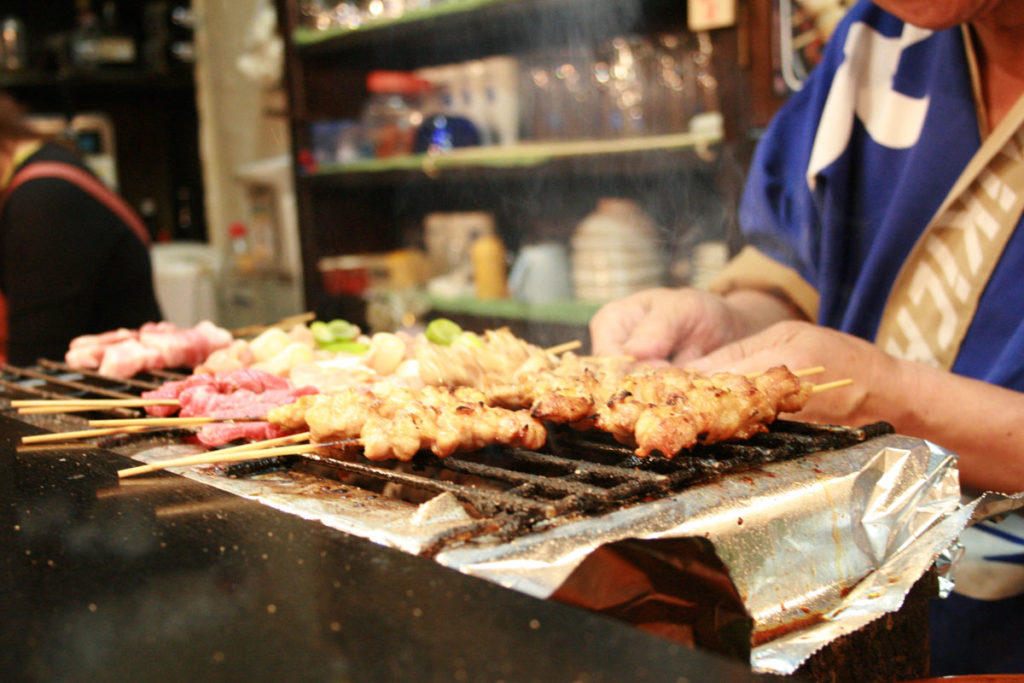
What would you expect during travel in Japan? Many travelers love to taste Japanese food. Yakitori may be the most popular Japanese food among foreigners. Yakitori is skewered chicken, which can be easily eaten even if you are not familiar to chopsticks!
There are lots of kinds of yakitori, depending on the flavor, part of chicken, and how to cook. Best 6 Yakitori Restaurants in Tokyo will introduce varieties of yakitori and difference between regular chicken and jidori, chicken peculiar to a certain region, as well as some suggestions about yakitori shops in Tokyo according to your budget.
Yakitori, One of the Best Japanese Food in Tokyo
Yakitori is one of the most popular food in Japan, which has a long long history. In the 8th century already, grilled quails were served at court. Yakitori has been developed as time goes by, and now, Yakitori has become one of the favorite dishes to everyone. If you walk around a station in a business area like Shinbashi or Shinagawa after 6:00 in the evening, you can find many people drinking a glass of beer with a yakitori skewer in their hand. Why don’t you join them to grab a bite?
What is yakitori?
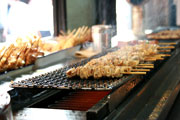
Yakitori is skewered grilled chicken made from bite sized pieces of chicken meat. Yaki means grilling and tori means chicken. Yakitori has been very popular snack and goes well with sake, shochu (typical Japanese distilled spirit), and wine. Yakitori are usually cooked over charcoal grill and made to order.
6 popular types of yakitori
Taste of yakitori varies depending on the part of chicken. Let’s take a look at typical yakitori by each part.
1.Momo – thigh
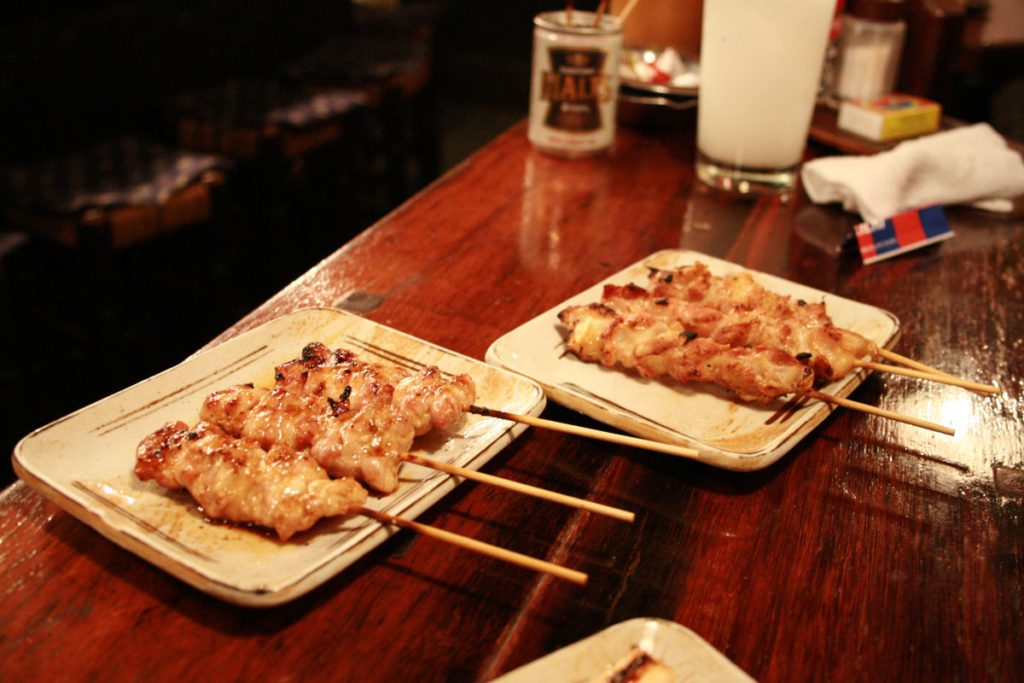
Thigh is the most popular part among Japanese. Thick, juicy, chewier but rich taste, it goes well with traditional sake or red wine. You can choose soy sauce flavor or salt flavor.
2.Mune – breast
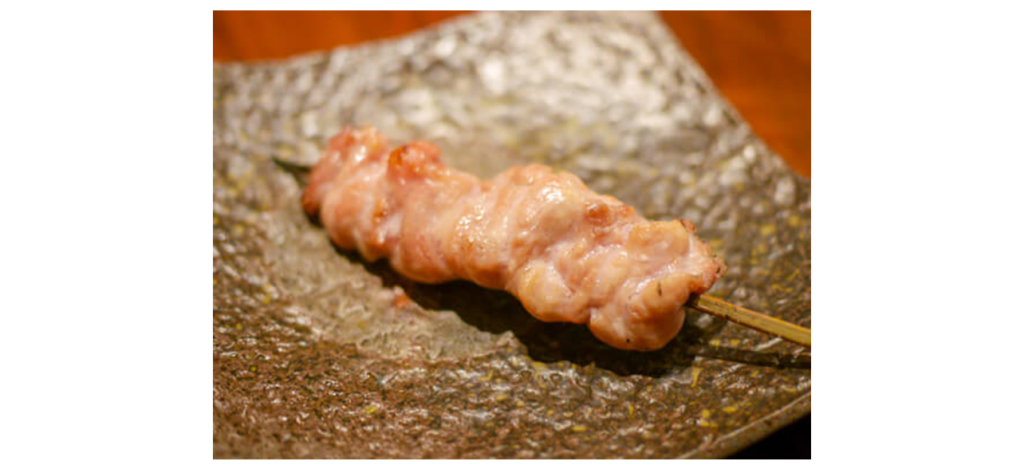
3.Nankotsu – cartilage
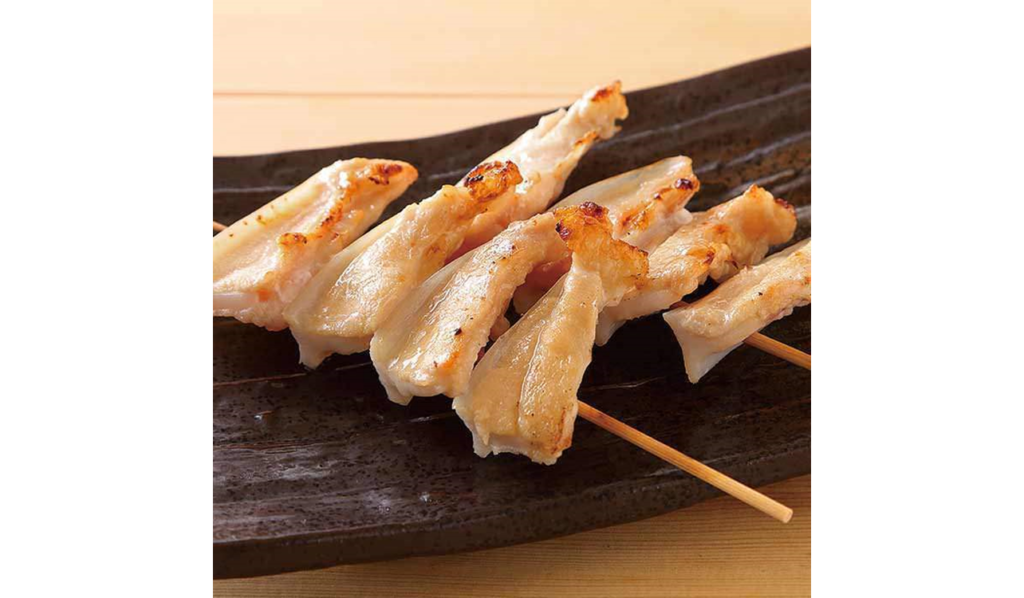
4.Seseri – neck
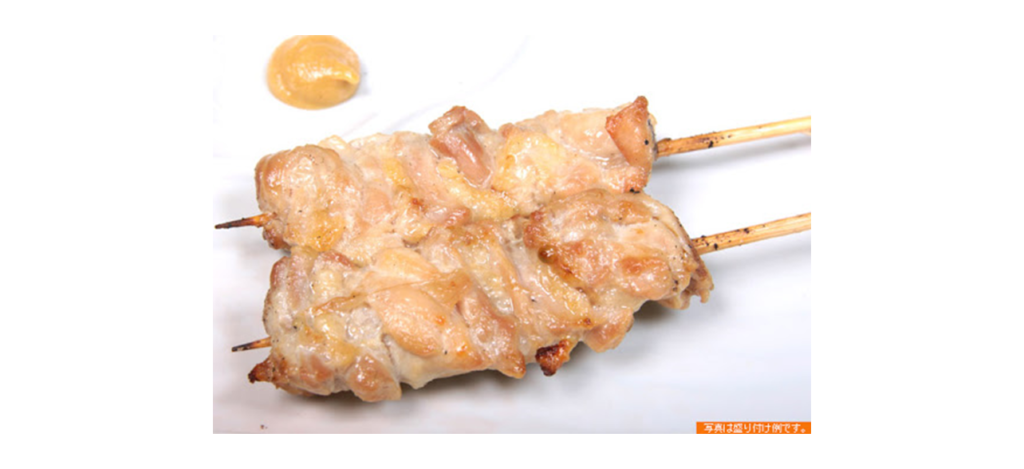
Meat from neck part is chewy but juicy and rich taste.
5.Hatsu – hearts
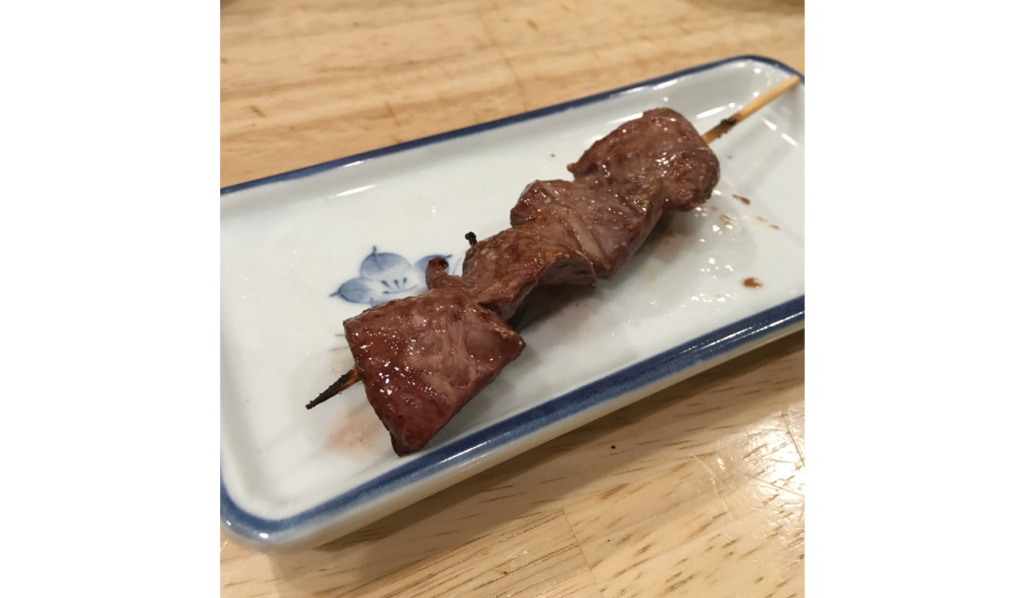
Hatsu, Heart is a bit solid, chewy in texture and rich in taste.
6.Tsukune – minced chicken
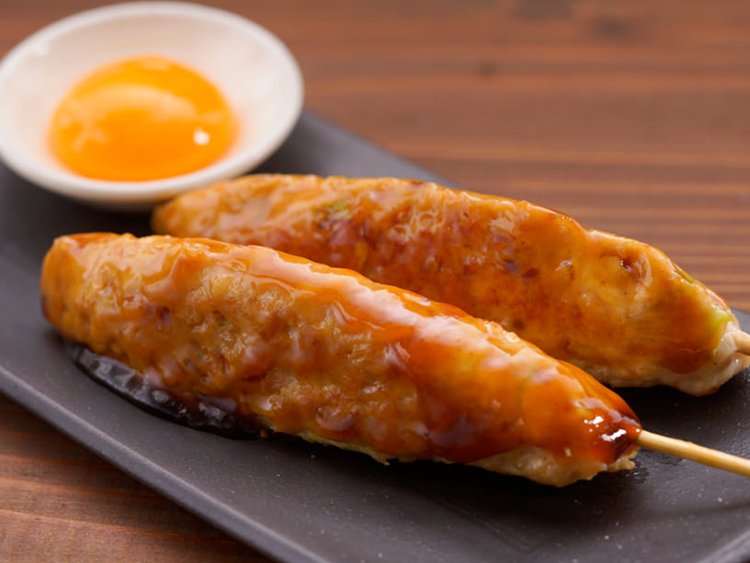
Tsukune is skewered balls or cake of minced chicken. Ingredients deffer by the restaurant. Usually served with soy sauce flavor.
Try Jidori Chicken – high quality of chicken
Jidori is high quality chicken which meets the four items specified by Japan Agricultural Standard.
- Certified for having more than 50 percent of blood from traditional species. Traditional species are defined as 38 species acknowledged as native ones before Meiji era (1868-1912).
- Bred more than 75 days.
- Bred in an open space farm from the age of 28 days.
- Raised in a low-density farm field with less than 10 chickens per 4.1㎡ area.
Those method can breed better quality of chicken than normal ones called broiler, because they feed nutritious feedstuff and take time to grow. The ratio of Jidori is only 10 percent out of all commercial chicken meat, and because of this rareness, their price is higher.
Good quality of jidori ensures good texture and taste. When you bite it is watery, juicy, chewy, rich in taste, and very nutritious containing good fat, glycogen, and collagen.
Recommended Fancy Yakitori Restaurants in Tokyo
Now, you have learned much about yakitori. So, let us go out for good yakitori. Here are some good restaurants in Tokyo. Since it was originally served at court, let us begin with some fancy restaurants.
1.Yakitori Imai at Gaienmae
Yakitori Imai was awarded Bib Gourmant, but kind of fancy restaurant and recommended for special dinner.
Yakitori Imai only uses jidori chicken and organic vegetables. Very good champagne, wine, and sake are served. From all the 30 seats at the counter, you can see chefs cooking in the open kitchen. The atmosphere of the restaurant is chic and calm, so, it is good for dating, family dinner, and business dinner.
URL : https://yakitoriimai.jp/ Six minute walk from Tokyo Metro Ginza line Gaienmae station. Opens 5:30 pm to 9:30 pm everyday except Mondays, Sundays, and public holidays. Price range : around 10,000 to 15,000 yen per person. Regular closing day : Mondays, Sundays, Holidays
Related Post
Tokyo Highlights at Your Pace Harajuku
2.Ginza Birdland at Ginza
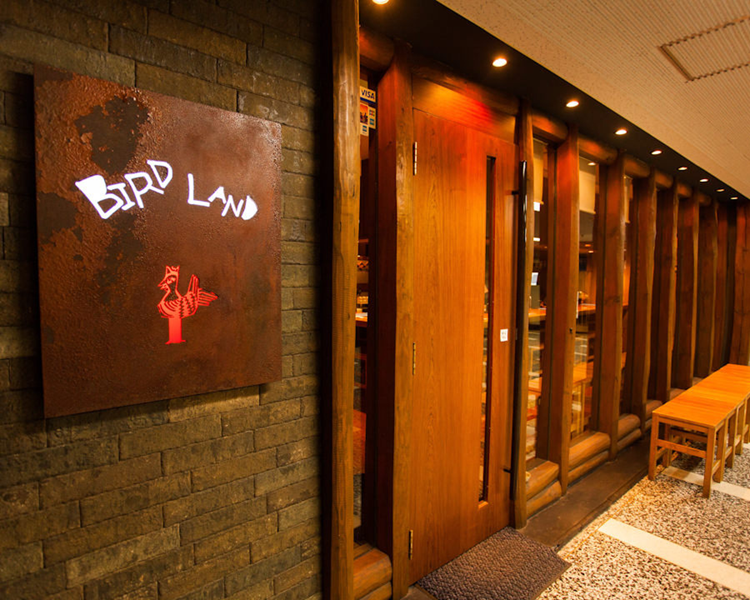
Ginza Birdland was granted one star in the Michelin Tokyo version in 2015. The chef uses only Jidori called Okukuji shamo from Ibaraki prefecture. Two kinds of prix-fixe menus are served. Price : around 6,300 yen for 5 dishes, 8,400 yen for 8 dishes
URL : http://ginza-birdland.sakura.ne.jp/index.html
Ginza Birdland is located one minute away from Tokyo Metro Ginza line Ginza station. Opens : 5:00 pm to 9:30 pm everyday except Mondays, Sundays, and public holidays.
TOP 15 Things To Do in GINZA – Shopping, Places, Restaurants
3.Shirogane Toritama at Hiro
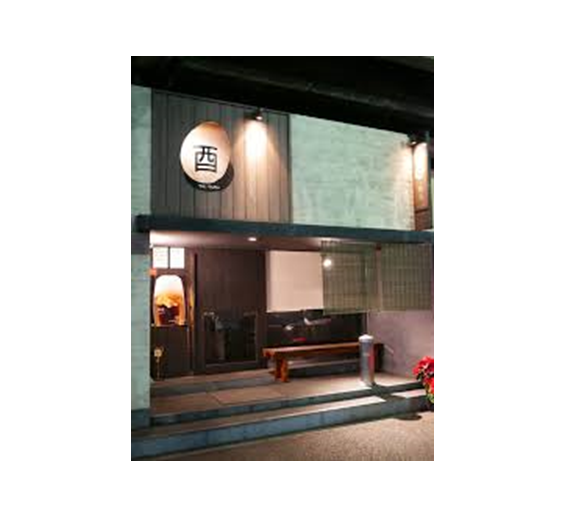
Shirogane Toritama
Shirogane Toritama received Bib Gourmand. Since they have some branches overseas, you may already know their name. Shirogane Toritama serves more than 30 kinds of parts of chicken including parts that you can taste only in this restaurant. Shirogane Toritama is not so big and the number of seats is limited. So, you can taste good yakitori sitting at the counter just next to local business people while casually listening to jazz music. Price : around 6,000 to 8,000 yen The restaurant is 10 minutes walk from Tokyo Metro Hibiya line Hiroo station.
URL : https://www.facebook.com/toritamahonkan/
Opens : 5:30 pm to 10:00 pm everyday. *Due to several rules of COVID-19, the business hour and days off of each restaurant are subject to change. Better to contact the restaurant before you visit.
The Ultimate Guide | 18 Recommended Things To Do in Tokyo
Affordable yet Tasty, Popular Yakitori Chain Restaurants in Tokyo
In the 18th or 19th century, yakitori was a typical snack for pilgrims and sold on approaches of shrines or temples. After the war, yakitori has become affordable food for workers. Now, let us take a look at affordable but tasty restaurants which are always full of customers.
1.Tori kizoku
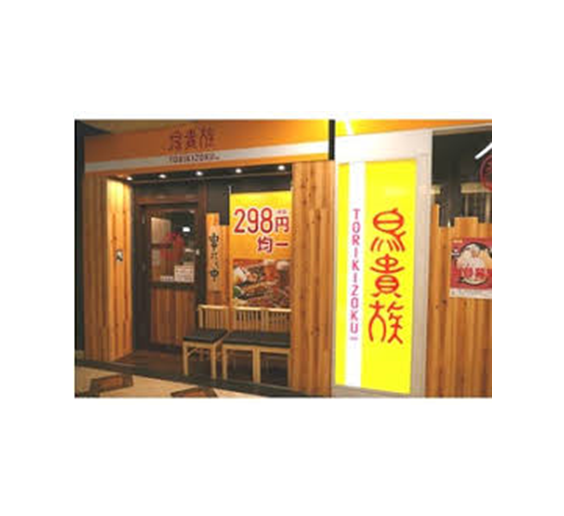
Tori kizoku is a big chain of yakitori restaurants, very popular for its surprisingly reasonable price of 298 yen for every item! Tori kizoku are running 626 restaurants nationwide and you can find their branch almost everywhere. Besies 30 kinds of yakitori, they can serve various dishes. Tori kizoku is recommended for yakitori beginners or people who want a quick dinner. Price : around 2,000 to 3,000 yen
2.Toritetsu
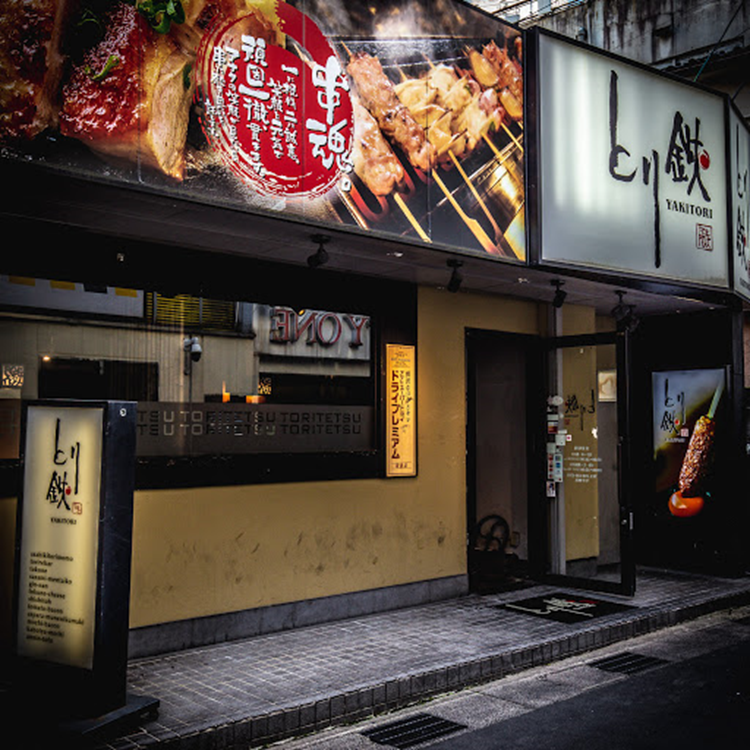
Toritetsu is also very popular and affordable yakitori chain whose atmosphere is modern and chic. Original homemade sauce is made of soy sauce from long-established soy sauce manurfacturer. Originally blended salt and miso paste from traditional manufacturers are also used. Toritetsu use several brands of chicken originally raised for only this chain. Toritetsu also serve organic salad and you can enjoy delicious and safe food at a reasonable price. English menu is available in some branches. Price range : around 2,000 to 3,000 yen
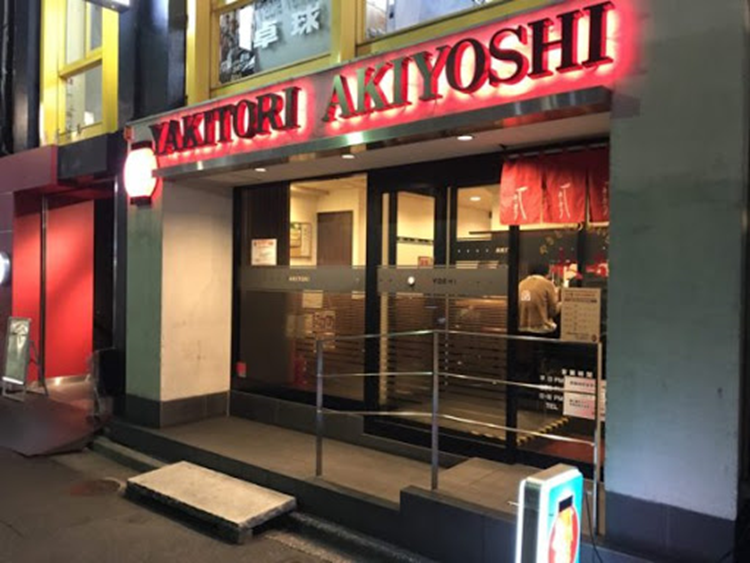
Akiyoshi is a yakitori chain whose head restaurant is in Fukui prefecture. Fukui prefecture is famous for its biggest number of company presidents, so, once you open the door of this restaurant, you will become a president! In Akiyoshi restaurant, customers are called Shacho, meaning a president.
Akiyoshi serve not only grilled chicken, but also serve grilled pork and beef. There is a hot metal plate on each table, which keeps your yakitori warm for a long time. Each dish of yakitori consists of five smaller skewers. Price range : around 3,000 to 4,000 yen. * Business hours vary by branch, please contact each restaurant.
Author Profile
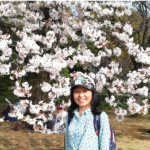

Latest entries
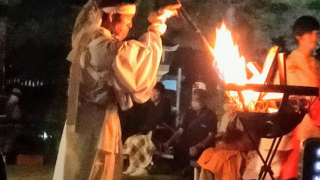
- Click to share on Twitter (Opens in new window)
- Click to share on Facebook (Opens in new window)
Shinjuku Omoide Yokocho, Kabukicho and Golden Gai Food Tour

/ Check the great tour \
10 Best Yakitori Restaurants in Tokyo

Bryce was born in California, but raised from the age of 3 near Seattle, Washington. He’s been living in Tokyo for about 7 years, and graduated from Temple University, Japan with degrees in economics and international business. He loves traveling of course, but also cooking, snowboarding, some video games as well. His biggest interest is songwriting/music production, more specifically electronic music… (think Skrillex, Marshmello, Daft Punk, etc.) He also has terrible humor as you’ll notice, but he hopes you’ll enjoy it!
This post may contain some affiliate links. When you click through and make a purchase we may receive some commission, at no extra cost to you.
Yakitori is one of the most beautifully simple Japanese dishes you can get. Among most Japanese food , simplicity seems to be a sought after quality and is certainly well performed. Simplicity in no way means lackluster. If anything, it’s more of an achievement by the chef to make something so simple become so immaculate. Okay, so what is yakitori? Well, it’s chicken on a skewer traditionally cooked over charcoal. Add some salt or sauce and dig in. Simple enough, right? Well, let us show you just how outstanding this dish can be and how the focus and professionalism of the chefs and their staff throughout Tokyo can create unforgettable tastes and experiences.
▼ Explore Shinjuku, home to some of the best yakitori spots, on our bar hopping tour!

1. Bird Land
2. toritama, 3. yakitori imai, 4. torisawa, 5. tokoshima, 6. bird court, 7. ginza torishige, 9. michishirube, 10. shibuya morimoto, japan wonder travel food tours , other articles you might like.
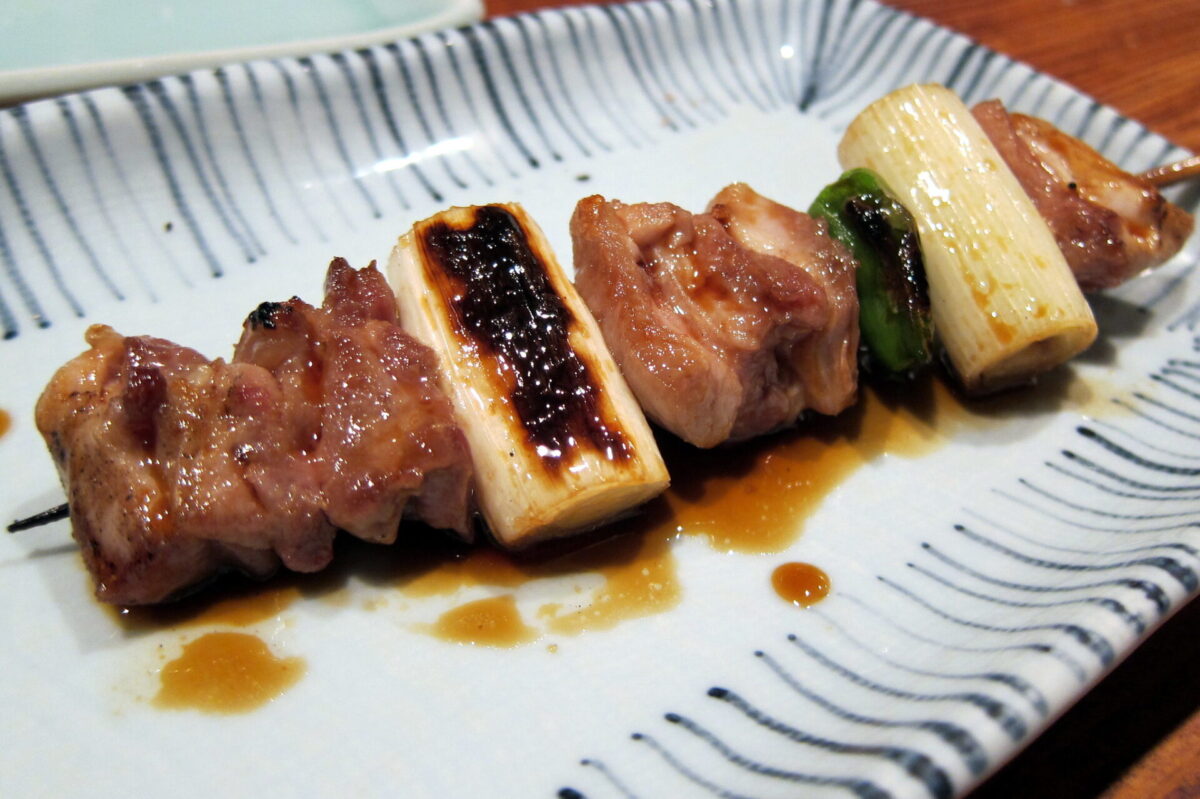
Starting off strong in our Yakitori adventure in the fancy area of Ginza , we have a Michelin star rated choice by the name of Bird Land. While the name might warrant a chuckle, the experience will undoubtedly take a grin to a set of raised brows in seconds! The specially sourced “Okukuji Shamo” chicken is from Ibaraki (north of Tokyo), retains unmatched freshness, and is cut in-house. This results in the safety of serving some dishes where the chicken is lightly cooked, something usually unheard of in other countries. The overall minimalist cooking technique is precise and coupled with delicately prepared side dishes along with intricate sauces.
Website: Bird Land
Make your reservation here
Toritama is the Yakitori gem of the Shirokane area, located in another upper class area of Tokyo. The greater Minato area, just like Ginza, is worth adventuring through. But of course, don’t miss out on this unique Yakitori experience; their claim to fame here is their variety of cuts and sake . Here you’ll be able to order parts of the chicken that you may not be able to get at other places. It’s the perfect place for an adventurous dinner! The equally rare and diverse selection of sake pairs perfectly and is further joined together by soothing jazz music.
Website: Toritama
Head over to a more youthful area of Tokyo, and check out a surprisingly refined Yakitori joint in Harajuku . Yakitori is often ordered by the skewer, though you can generally also order an assortment of skewers. Yakitori Imai takes it to the next level and offers a personalized course style. You know what a course is, but what do we mean by personalized? Well, the chef will pay attention to each customer- their personality, what they like to drink, and even the weather to generate the perfect selection of food for you to enjoy!
Website: Yakitori Imai
Koto city is a pleasant, old-fashioned area that offers a lot of humble treats. Torisawa is no exception to this and sticks to the main focus of the whole idea: the grill and the chicken. The simplicity here is a wonderful way to experience how yakitori should be. With a wide variety of skewers and appetizers, you’ll surely have no problem enjoying the meal. Be sure to try the special sauce. It really brings the experience together.
Website: Torisawa
In the scope of this list so far, this place is somewhat of a marriage between our first two suggestions. When you combine the meticulous selection of the chicken like Bird Land’s with the diversity of cuts like Toritama’s, you’re graced with a finely selected and wasteless meal of expertly prepared chicken skewers. The intimate and refined interior provides not only a good view of the intricacies of preparation but also a relaxed dining experience. Sangenjaya , where Tokoshima is located, is also a robust area with plenty of adventures to go on, including lots of small hole-in-the-wall places!
Website: Tokoshima
Bird Court also sells the same “Okukuji Shamo” chicken meat as Bird Land. They maintain high quality, intricately prepared dishes and photogenic appetizers, as well as offer the entire chicken. If you have already enjoyed Bird Land or are simply looking for a location closer to you to enjoy a similar experience, be sure to head down to Kita-Senju!
Website: Bird Court
Head back over to Ginza for another finely tuned menu full of great Yakitori items. This location is somewhat of a flagship or staple in the general Yakitori scene. They offer all the general items you’ll find in Yakitori places. And, of course, this location has a good reputation for executing it very well. As a bonus, they offer other meats like beef , as well as a must-try curry rice. Chicken is still the menu’s foundation, but you’ll have the opportunity to have other, well-paired options as well.
Website: Ginza Torishige
Not to be confused with the chain Torikizoku, Toriki is a 9 years consecutive “Gourmet Guide” award-winning location that also boasts a Michelin star. Coupled with its remarkable quality of liver and giblets, this location may be daunting for some western patrons. But rest assured that if you’re not comfortable with those cuts, the rest of the menu items are hardly overshadowed. Make sure you head over to Kinshicho to experience Toriki, and make sure to make a reservation – it’s almost always full.
Website: Toriki
Hidden in the Shinjuku ‘s Sanchome area, you find this vibrant yakitori joint. The old-fashioned vibe of this place makes it very cozy and fun to be in. The cost is nothing extravagant, but the food is tasty enough to make you feel like you’re getting a steal! The menu is quite basic, but it will definitely be enough to satisfy. It’s a perfect spot to fill up and add to a night of bar hopping and fun around Shinjuku!
Website: Michishirube
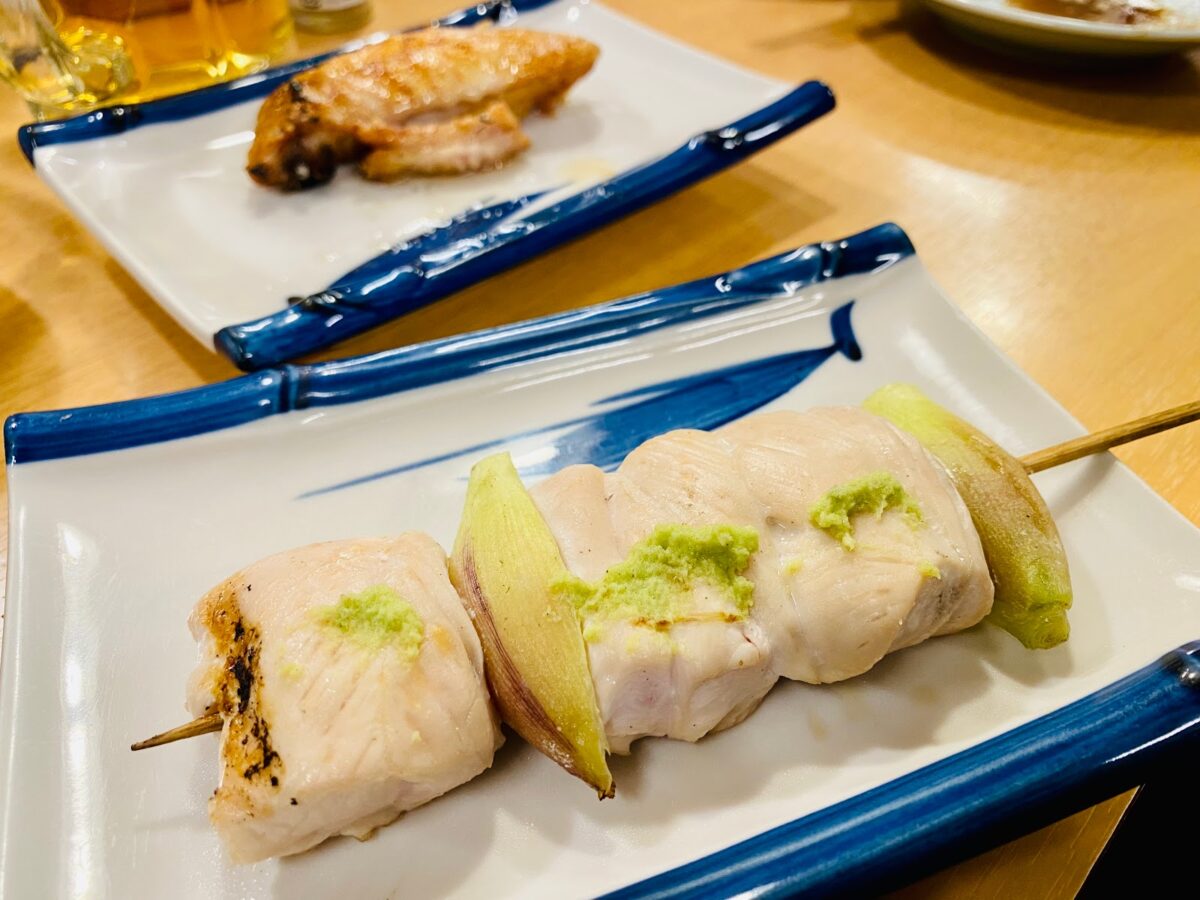
On the note of old-fashioned vibes, Shibuya Morimoto is a monument to yakitori! Still in the same spot since 1952 and still serving its well-established menu, this place is a must-try for Yakitori enthusiasts and travelers alike. Of course, they serve the general Yakitori items, but also eel and a few other interesting items. It is undeniably an experience being able to go to a restaurant that has stood the test of time without wavering in its styles of service and production.
Website: Shibuya Morimoto
Japan Wonder Travel is a travel agency that offers guided tours throughout Japan. From private walking tours to delicious Food and Drink tours, we can help organize the best tours just for you! If you want to explore Japan and learn more about the history and backstories of each area you are traveling in, our knowledgeable and friendly guides will happily take you to the best spots! In addition, we can provide you with any assistance you may need for your upcoming trip to Japan, so please feel free to contact us if you have any questions or need some help!
▶ Tokyo Tsukiji Fish Market Food and Drink Tour Explore the most lively and popular fish market in Tokyo where you will have the chance to try some of the local’s favorite street foods and sake along with your friendly English speaking guide!

▶ Shinjuku Bar Hopping Tour: Experience Tokyo’s Nightlife in Izakaya Check out the best spots in Shinjuku while bar hopping through the lively and vibrant area. Try some delicious local food and drink as you explore the narrow yet photogenic alleys that the town has to offer. Experience Japanese izakaya culture and drink in Shinjuku like the locals!
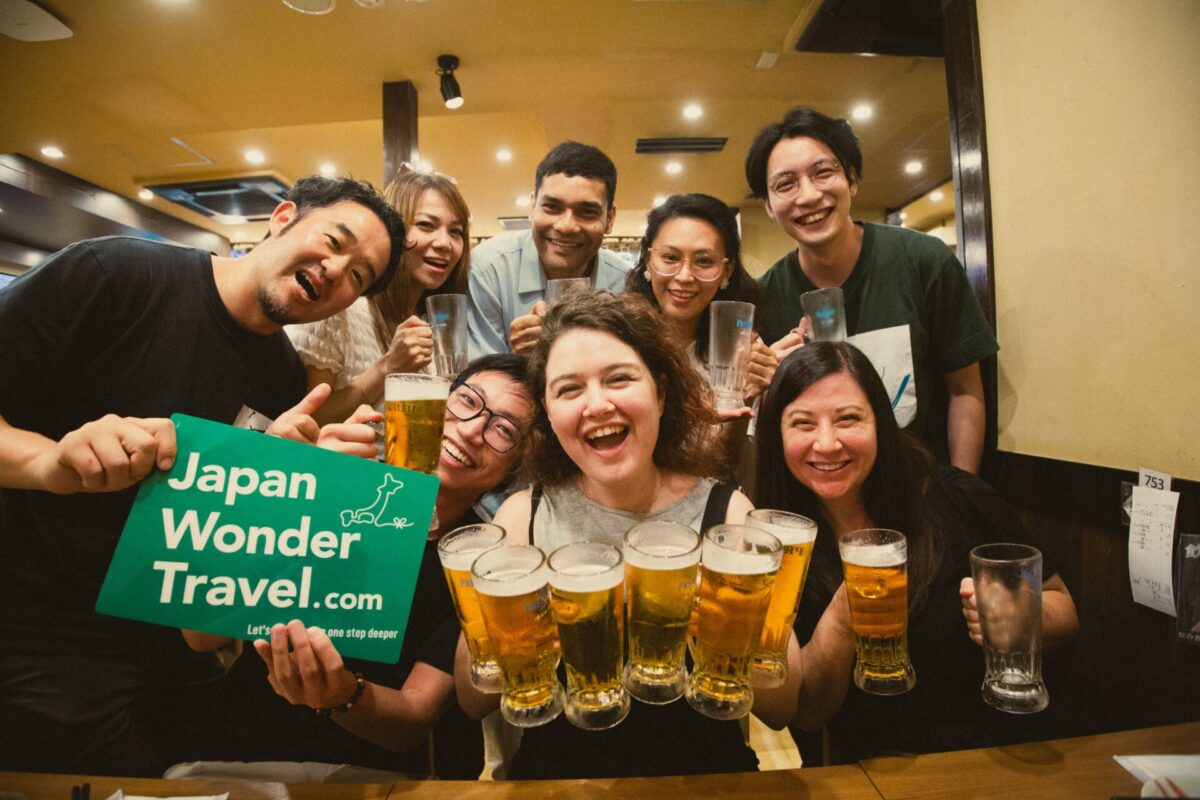
▶ Explore Nishiki Market: Food & Culture Walk If you’re looking to learn more about the culture and the local cuisine of Kyoto, this is the perfect tour for you! Take part in this Kyoto food and drink tour and explore the 400-year-old market and the surrounding areas.
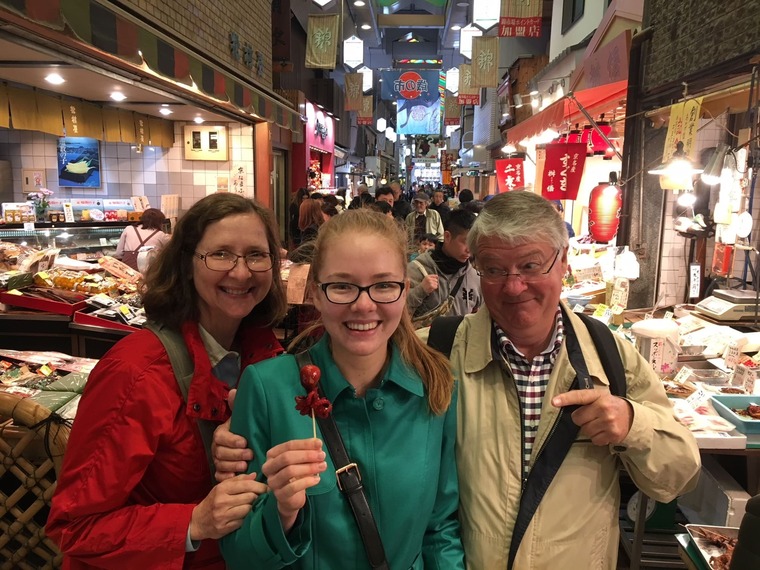
Follow us on Instagram , Facebook , Twitter , and TikTok for more travel inspiration. Or tag us to get featured!
Happy traveling!
Stay informed of the best travel tips to Japan, the most exciting things to do and see, and the top experiences to have with the Japan Wonder Travel Newsletter. Every week we will introduce you to our latest content.
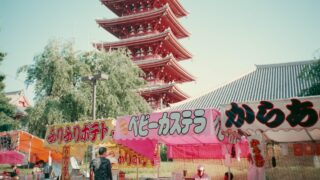
- Popular destinations
- Hidden places in Japan
- Tours and workshop
- Food and drink in Japan
- Itinerary in Japan
- Places to visit in Tokyo
- Food and drink in Tokyo
- Seasonal events
- Tours & workshops
- Tokyo This Week
- Day trip from Tokyo
- Itinerary in Tokyo
- Places to visit in Kyoto
- Food and drink in Kyoto
- Itinerary in Kyoto
- Day trip from Kyoto
- Travel tips
- Accommodation
- Cultural tips
- Transportation
- Tokyo Tours
- Kyoto Tours
- Kimono Rental
- Fukushima Tours
- Mount Fuji Tours
- Tour Package
- Travel Concierge Service
- Media Kit(English/日本語)

Yakitori Alley – The Culinary Hidden Gem Of Tokyo
Discovering the hidden gems of yakitori alley: a traveler’s guide to tokyo’s vibrant nightlife, yakitori alley: a culinary and cultural experience.
Yakitori Alley, also known as “Piss Alley” or “Memory Lane,” is a narrow alleyway located in the Shinjuku district of Tokyo, Japan. It is a vibrant and bustling area that comes alive at night, offering visitors a unique culinary and cultural experience. The alley is lined with small, intimate restaurants and bars, each specializing in the art of yakitori.
Yakitori is a traditional Japanese dish that consists of skewered and grilled chicken. The word “yakitori” translates to “grilled chicken” in English. The chicken is typically seasoned with salt or a sweet soy-based sauce, and then grilled over charcoal until it is tender and juicy. Yakitori is a popular dish in Japan because of its simplicity and delicious flavors. It is often enjoyed as a snack or paired with drinks, making it a perfect choice for a night out in Yakitori Alley.
The History and Evolution of Yakitori Alley
Yakitori Alley has a rich history that dates back to the post-World War II era. After the war, many small food stalls and bars began to pop up in the alley, offering cheap and tasty food to the locals. These stalls primarily served yakitori, as chicken was readily available and affordable at the time.
Over the years, Yakitori Alley has evolved into a popular destination for both locals and tourists alike. The alley has become more organized and regulated, with many of the stalls being replaced by small restaurants. Despite these changes, Yakitori Alley has managed to maintain its unique charm and character.
Today, Yakitori Alley is known for its lively atmosphere and delicious food. It has become an integral part of Tokyo’s nightlife scene, attracting people from all walks of life. Whether you’re a food enthusiast looking to try authentic Japanese cuisine or a traveler wanting to immerse yourself in the local culture, Yakitori Alley offers a one-of-a-kind experience.
Exploring the Best Yakitori Restaurants in Tokyo
When it comes to yakitori, there are several standout restaurants in Yakitori Alley that are worth visiting. One such restaurant is Toriki, known for its high-quality ingredients and skilled chefs. The menu at Toriki features a wide variety of yakitori options, including chicken thigh, liver, and even chicken heart. Each skewer is expertly grilled to perfection, resulting in tender and flavorful chicken.
Another popular restaurant in Yakitori Alley is Omoide Yokocho, which translates to “Memory Lane.” This restaurant is known for its cozy and nostalgic atmosphere, with its narrow alleyways and dimly lit lanterns. Omoide Yokocho offers a range of yakitori options, as well as other traditional Japanese dishes such as ramen and tempura. It is a great place to experience the authentic flavors of Tokyo.
For those looking for a more modern twist on yakitori, Birdland is the place to go. This Michelin-starred restaurant offers a refined dining experience, with a focus on using high-quality ingredients and innovative cooking techniques. The menu at Birdland features a variety of yakitori options, including unique cuts of chicken and creative flavor combinations.
The Art of Yakitori: Understanding the Grilling Techniques and Ingredients
Yakitori is more than just skewered and grilled chicken; it is an art form that requires skill and precision. The grilling techniques used to cook yakitori are what give it its distinct flavor and texture. The chicken is typically grilled over charcoal, which imparts a smoky flavor and helps to seal in the juices.
There are several different types of yakitori, each with its own unique ingredients and flavors. Some popular types include negima (chicken thigh and leek), tsukune (chicken meatball), and momo (chicken thigh). The ingredients used in yakitori can vary depending on the restaurant, but they often include chicken, vegetables, and sometimes even seafood.
When ordering yakitori, it is important to know how to navigate the menu. Most restaurants offer a variety of options, so it can be overwhelming at first. A good rule of thumb is to start with the basics, such as chicken thigh or chicken breast, and then gradually try more adventurous options. It is also common to order a variety of skewers and share them with your dining companions.
Beyond Yakitori: Other Must-Try Dishes in Yakitori Alley
While yakitori is the main attraction in Yakitori Alley, there are also other dishes that are worth trying. One such dish is yakisoba, which is a type of stir-fried noodles. Yakisoba is typically made with wheat noodles, vegetables, and meat or seafood. It is a popular street food in Japan and can be found at many stalls and restaurants in Yakitori Alley.
Another must-try dish in Yakitori Alley is takoyaki, which are small, round balls of batter filled with octopus. Takoyaki is cooked on a special griddle and topped with a variety of sauces and toppings, such as mayonnaise, bonito flakes, and green onions. It is a popular snack in Japan and is often enjoyed with a cold beer.
For those with a sweet tooth, taiyaki is a must-try dessert in Yakitori Alley. Taiyaki is a fish-shaped pastry filled with sweet red bean paste. It is a popular street food in Japan and can be found at many stalls and shops in Yakitori Alley. Taiyaki is best enjoyed fresh and warm, straight off the griddle.
Sake and Shochu: Pairing Drinks with Yakitori
No visit to Yakitori Alley would be complete without trying some sake or shochu. Sake is a traditional Japanese rice wine that is made by fermenting rice. It has a smooth and slightly sweet flavor, making it a perfect accompaniment to yakitori. Shochu, on the other hand, is a distilled spirit that can be made from a variety of ingredients, such as rice, barley, or sweet potatoes. It has a stronger flavor and is often enjoyed on the rocks or mixed with soda.
When ordering sake or shochu in Yakitori Alley, it is important to know how to navigate the menu. Most restaurants offer a variety of options, ranging from dry to sweet. If you’re unsure of what to order, it is always a good idea to ask the staff for recommendations. They will be able to guide you based on your preferences and the flavors of the yakitori you are ordering.
Navigating the Crowds and Finding Hidden Gems in Yakitori Alley
Yakitori Alley can get quite crowded, especially during peak hours. To navigate the crowds, it is best to arrive early or late in the evening when the crowds are smaller. It is also a good idea to be flexible with your dining plans and be willing to wait for a table if necessary.
While there are many popular restaurants in Yakitori Alley, there are also hidden gems that are worth seeking out. These lesser-known restaurants often offer a more intimate and authentic dining experience. To find these hidden gems, it is best to explore the side streets and alleyways of Yakitori Alley. You never know what culinary treasures you might discover.
The Nightlife Scene in Tokyo: What to Expect in Yakitori Alley
Tokyo is known for its vibrant nightlife scene, and Yakitori Alley is no exception. The alley comes alive at night, with its narrow streets filled with people enjoying food and drinks. The atmosphere is lively and energetic, with the sounds of sizzling yakitori and laughter filling the air.
When visiting Yakitori Alley at night, it is important to be prepared for the crowds and the noise. The alley can get quite busy, especially on weekends and holidays. It is also a good idea to dress casually and comfortably, as you may be standing or sitting on stools while enjoying your meal.
Tips for Travelers: Etiquette and Customs in Yakitori Alley
When visiting Yakitori Alley, it is important to be aware of the customs and etiquette that are expected. One important rule to remember is to never stick your chopsticks upright in your food, as this is considered bad luck. Instead, place them on the chopstick rest or on the side of your plate.
It is also customary to say “Itadakimasu” before starting your meal, which is a way of expressing gratitude for the food. When finished, it is polite to say “Gochisousama deshita,” which means “Thank you for the meal.” These simple gestures go a long way in showing respect for the food and the culture.
Conclusion: Why Yakitori Alley is a Must-Visit Destination in Tokyo
In conclusion, Yakitori Alley offers a unique culinary and cultural experience that is not to be missed when visiting Tokyo. The alley’s rich history, vibrant atmosphere, and delicious food make it a must-visit destination for travelers. Whether you’re a food enthusiast looking to try authentic Japanese cuisine or a traveler wanting to immerse yourself in the local culture, Yakitori Alley has something for everyone. So next time you find yourself in Tokyo, be sure to make a stop at Yakitori Alley and indulge in the flavors of Japan.
Previous Post Tsukiji Fish Market Tokyo
Next post zao onsen travel guide, leave a reply cancel reply.
Save my name, email, and website in this browser for the next time I comment.

All Articles
© 2024 Go International Travel | Your Go To International Travel Guide.
- Tokyo Cheapo (繁體中文)
Heaven on a Stick: The What and Where of Yakitori
Don’t know your gizzards from your tail? You’ve come to the right place.
Whether it’s a full-blown feast or an occasional snack between rounds of drinks, it’s hard to overstate the simple elegance of yakitori. Chicken. On a stick. Cooked over charcoal. The only real variation comes in the variety of cuts.
There’s usually some crossover between yakitori, and yakiton, a similar style of cooking made using pork, so the two are often used interchangeably in English. There’s normally also kushiage (battered and deep-fried meat or veg skewers) on offer too. Today though, we’re keeping things simple by stickin’ with chicken (that’s a rhyme and pun—you’re very welcome).
Types of yakitori
So, for your referencing pleasure, a list of the most popular yakitori cuts:
Momo – thigh Juicy and tasty. A very forgiving cut of meat, so quite difficult to get wrong.
Mune – breast On the dryer, blander side. A reliable favorite for pickier eaters.
Sasami – tenderloin Somewhat plain, so often served topped with a sauce or mentaiko (spicy pollock roe). Sometimes served pink.
Nankotsu – cartilage from either the breast or knee Somehow between crunchy and rubbery. Not for everyone, it’s more interesting for texture than taste.
Negima – a mix of momo and negi (green onion) Fated to be together. The Antony and Cleopatra of yakitori.
Seseri – neck Tender, fatty meat with occasional cartilage-like crunchiness.
Tsukune – minced chicken Unique to each shop. Texture can be smooth or crunchy (with nankotsu pieces), and spice levels vary wildly. Sometimes a raw egg yolk is provided for dipping.
Bonjiri – tail Very fatty, great with salt. Sometimes small bones are attached: I crunch right through them.
Kawa – skin Ideally crunchy, often chewy. Great with salt.
Reba – liver A slightly metallic bloody flavor, often enjoyed with tare. Best eaten quickly—they depreciate as they cool down.
Hatsu – hearts Like meaty little olives. Eat their hearts, gain their strength. A little chewy, but flavorful.
Shiro – intestine Chewy rather than meaty. Sounds off-putting but quite delicious served with tare.
Yakitori etiquette
If you’re uncomfortable with ambiguity, it might seem like a lot could go wrong with yakitori. In reality, once you know what to order it’s super straightforward. Unlike many Japanese cuisines, there aren’t really any rules to break!
You’ll see plenty of folks sliding the meat off the skewers using their chopsticks. This is great for sharing if you’re in a group, but there’s no pressure to do so if you’re flying solo. Feel free to eat straight from the stick!
If you are sharing, you’ll find some cuts tend to stick to the skewer—especially once they’ve cooled down. Spinning the skewer while pulling with your chopsticks can help unstick any especially tenacious morsels!
There’s usually a little pot for used skewers. If not, just place them back on the plate you got them from.
Where to try yakitori in Tokyo
Tokyo yakitori shops seem to go unaltered for long stretches—often decades at a time—which can make them an exciting way to experience unique sides to the city you’re unlikely to find elsewhere. Here are just five cheapo recommendations within the comfort of the Yamanote Line.
Torikizoku – Branches all over Tokyo
In direct contradiction to my last statement, I’m going to start by mentioning Tokyo’s most prominent homogeneous yakitori chain, Torikizoku. Past the cute branding, there’s very little personality to Torikizoku, and the booths negate any possibility of interaction with other customers or staff.
All that said, Torikizoku isn’t as popular as it is by mistake—there are a few compelling reasons to go here. Orders are placed via a tablet on your table, all in English, and there’s usually plenty of space for groups. They’re open late (the closest branch to me is open till 5 am). It’s also a good choice for less adventurous eaters—there are plenty of fairly plain options and the chicken is all super thoroughly cooked. If you’re looking for a clean, reliable and low-stress experience, you could do worse.
- ToriKizoku Shibuya Inokashira-dori
Tagosaku – Ebisu
Open for more than 60 years, Tagosaku has had plenty of time to build character. As evidence of that fact, the tare has remained unchanged since the shop first opened. I don’t just mean the recipe is the same. It’s the same sauce. They continuously add ingredients to keep the pot full year-round. It’s a no-frills retro izakaya (pub/restaurant), serving yakitori alongside hearty stews and rice dishes. If you sit at the bar, you can watch the chefs expertly flip your skewers over the charcoal grill.
Tagosaku is famous for serving Hoisu. (Apparently) once a popular alcoholic mix-drink, Hoisu seems to have fallen from the public consciousness, and is increasingly hard to find in bars. I had a tough time picking out any specific flavor, but if you’re a booze completionist, it’s worth trying!
Bunraku – Ueno
Well known for its rustic Showa-period (1926-1989) aesthetic, Bunraku has been serving customers since 1958. Once a notorious black market, the surrounding area of Ameyoko is more of a nostalgic tourist market these days, but it’s charming nonetheless.
It’s a small shop, so if it’s too busy don’t hesitate to wander around—you’ll be spoilt for choice for other yakitori shops in this area.
Omoide Yokocho – Shinjuku
Omoide Yokocho (usually translated as Memory Lane) is a ramshackle collection of small restaurants just outside Shinjuku station. It’s grungy and chaotic in a way Tokyo tends not to be—making it a nice change of pace. If you’ve walked down it before you’ll know there’s no point in planning ahead—if you see enough space to seat your group, go for it!
There’s a bustling yakitori alley between Yurakucho and Shinbashi stations. When the restaurants are in full swing, smoke billows dramatically from the entrance—a railway arch under the Yamanote Line tracks. It’s a popular spot to wind down after work, so there’s often a sea of tables and chairs spilling out into the streets.
Nearby are some of central Tokyo’s few remaining alcohol vending machines, arranged into an intimate standing-bar area beneath the tracks. If you’ve got time, it’s worth the short walk!
- Japanese cuisine
- Japanese food
- Restaurants
Get our Tokyo Cheapo Hacks direct to your inbox

Climbing Mt. Fuji in 2024: Permits, Trail Fees and Hut Reservations

Hidden Gems: Where to Buy Unique Souvenirs in Tokyo

Narita Airport to Tokyo

24 Hours in Tokyo — The Ultimate Itinerary Guide

A Beginner's Guide to Shibuya - Scramble Crossing, Shopping & Great Views!

Hakone Day Trip from Tokyo

Best Budget Sushi Restaurants in Tokyo

New Video! Where to Buy Trading Cards in Tokyo
See where to go for Pokémon, Yu-Gi-Oh!, Magic: The Gathering, and other trading cards.

September 2024: 7 Events Not To Miss
Sumo, autumn flowers, festivals with floats, Tokyo Game Show, and more.

12 Must-See Fall Music Festivals
Get ready for everything from bayside raves to mountain campouts.

New Video! Okutama: A Nature Lover's Paradise in Tokyo
Riverside BBQ, rafting, sake breweries and more — all an easy day trip away.

10 Tokyo Sports Bars to Try
Don't miss a single game.

8 Best Tokyo Beer Gardens
Top spots for a pint or two, in summer and beyond.

All-Night Itinerary: Experience Tokyo After Dark
The city doesn't sleep, so why should you?

New Video! Haneda Airport Survival Guide
We give you the lowdown on all the airport amenities, accommodation, and transport options.

August 2024: 7 Tokyo Events Not To Miss
Get ready for some of the best traditional Japanese festivals, fireworks, and cosplay of the year.

14 Japanese Summer Foods To Try
How many can you check off the list?

5 Best Night Cruises on Tokyo Bay
Summer is here, and it's time to board a "booze cruise".

Everything You Need To Know about teamLab Planets
Now with a shiny Guinness World Record. Ticket prices go up July 22.

Close without accepting
You are using an outdated browser. Please upgrade your browser to improve your experience.

Tokyo After 5

- Embark on an unmissable Tokyo nightlife experience with a local English-speaking guide, touring the city's dynamic food scene.
- Start the journey with a wide range of delectable dishes at Depachika, and sample traditional Japanese sweets (Wagashi) tailor-made for the season.
- Discover the birthplace of "Monja-Yaki" at Monja Street, and enjoy the fun of eating straight off the grill in a truly local fashion.
- Indulge in authentic yakitori in Yakitori Alley, accompanied by a glass of sake or regional beer, just like the locals do after work.
- Hurry and book your spot on this popular tour! Availability is limited and the culinary delights of Tokyo await you.

Tokyo is renowned for its vibrant food scene, and what better way to experience it than touring the culinary hot spots with a local? Your English-speaking guide will explain the history of the food and places that you visit and share local food traditions and customs.
We'll begin our tour taking a quick stroll through Depachika, the food section at the basement of the department store, where you can find a wide variety of dishes, from slightly upscale delicacies for when you have guests over, to those that are usually used as side dishes. All sorts of exquisitely presented Japanese, Western, and Chinese sweets satisfy any sweet taste. A wide range of culinary options, sweets stores, information on the wide array of traditional Japanese sweets (Wagashi), and, best of all, the chance to choose a Wagashi to sample! These sweets, which are often composed of rice and red beans, fluctuate according to the ingredients that are in season and even take shapes that originate from seasonal plants and animals. If possible, we'll go to the Itoya stationery store, which opened its doors in 1904 and is a good place to see how prevalent Japanese paper culture is even now.
We'll visit "Monja" Street in Tsukishima to see the claimed birthplace of "Monja-Yaki" after enjoying a nighttime stroll around Ginza lighted by neon signs. Monja-yaki is a style of pan-fried Japanese batter with various toppings that is sometimes likened to Okonomi-yaki in Osaka. Before grilling, the ingredients are coarsely diced and incorporated into the batter. You may converse with the chef while your dish is being prepared and eat your Monja-yaki right off the hot plate. Be careful as you eat directly off the grill in genuine native fashion using a little metal spatula.
After enjoying Monja, we'll take the subway back to Ginza and proceed to Yakitori Alley, which is home to a number bar style restaurants and is also the origin of yakitori, a popular appetizer among many Japanese people. We'll have a glass of sake or a regional beer, as many businesspeople do after 5 o'clock, and then have some yakitori at one of the numerous nearby eateries, each of which has its own "tare" (sauce) made with its own special ingredients
The tour concludes here, but don't forget to ask for recommendations on additional sights, activities, and meals to enjoy while you're here or you can return with your guide to the meeting spot.
Please Note : Legal age for drinking alcohol in Japan is 20 years old. Out of respect for the other passengers we won't be able to accommodate late arrivals. Due to heavy traffic in Tokyo, please plan your journey in advance, ensuring you arrive at least 10 minutes before the start time of your tour. The itinerary and locations that are included in the tour are subject to change. Vegetarian, Vegan, or Gluten Free options are not available on this tour. The food contents are subject to change, depending on what is available that day.
- Share full article

A Cook’s Tour of the Tokyo Food Scene
Taking a cooking class in the Japanese capital adds layers to an exploration of the city’s abundant supply of restaurants, from a pricey kaiseki spot to a chain noodle joint.
Good, inexpensive yakitori can be had at Yakitori Yoneda, just south of Nishi-Ogikubo Station in Tokyo. Credit... Chang W. Lee/The New York Times
Supported by
By Timothy Taylor
- Published Nov. 8, 2023 Updated Nov. 17, 2023
It’s a Monday afternoon in the Tsukiji branch of the Tokyo Sushi Academy and we’re about to be put to the test. Or I am anyway. Most of the other students enrolled in the Japanese Culinary Intensive course are professionals. They are local or from abroad, just brushing up on skills or adding to their repertoire. My bench mate works charter yachts out of Australia. Our sensei, the chef Hiro Tsumoto, noticed a tattoo on his forearm with Japanese characters and called out: “Hey, that’s my aunt’s name!”
I’m among the civilians whom the academy also welcomes into the course. I’m here for the challenge, certainly. But in this moment, I’m feeling distinctly in over my head.
Mr. Hiro, who is also one of the academy’s founders, has been walking us through the basics of kaiseki, a word used for both the traditional multicourse Japanese meal as well as the skills and techniques required to make it . This involves talking about a bewildering range of things, including knife cuts for notching the top of a shiitake mushroom, how to knot a sprig of the herb mitsuba for garnish, as well as the precise temperature to best extract flavor for dashi broth made from kombu seaweed and katsuobushi, or dried bonito fish shavings. On the topic of kaiseki Mr. Hiro grows briefly philosophical, noting that it’s a lifetime practice and thus approaching the ineffable.
“Like the kappa. What actually is the kappa?” he says, by way of a winking explanation. “OK, let’s cook!”
I’ll only learn later that the kappa is a mythic reptilian creature fond of cucumbers and sumo. At the moment, I have to dive into the fray of all these pros grabbing pots and grills and assembling ingredients for the fish stew we’re preparing.
My first order has arrived at the imaginary pass: an individual kaiseki serving of clear fish soup, osumashi, for one. My heart is racing. My hands are trembling. This has to be the most pressure I’ve ever experienced on what is supposed to be a holiday. But I am loving it.

A new respect for tempura and other classics
There are more obvious ways to explore Tokyo’s food scene. Following the Michelin stars makes a certain amount of sense given that the Michelin Guide lists 198 restaurants with 261 total stars this year, more than any other city on earth. But you could also arrive here without any food plan at all.
Tokyo may seem initially chaotic to visitors, but discovery and luck are key parts of the city’s charms. If you find yourself trying to find a peaceful corner — as you likely will on occasion — you might come across a jewel. For instance, wandering away from the crowds at Tsukiji Outer Market, you might stumble down some worn linoleum stairs off Namiyoke-dori and find yourself in the Tohto Grill . It’s a diner. No Michelin star at the moment or likely. But there are truck drivers eating plates of fried horse mackerel and stewed beef tendon here. There’s a jukebox and a cigarette machine and the tuna sashimi breakfast set with pickled cabbage and whitebait is unpretentiously perfect.
Cooking school, I’ve found, adds a layer to one’s explorations. And you don’t need a week at the Tokyo Sushi Academy either. I’ve done a three-hour soba intensive with Tokyo Cook and a one-hour fruit-cutting lesson at the Takano Fruit Parlor.
At the most obvious, things you have taken for granted will inspire new respect. Or at least, if you are me, you’ll rethink your longstanding indifference to tempura. It’s just too hard to make to be indifferent about. Before cooking school, I’d never thought about the perfect temperature gap between the battered item and the oil in which it’s cooked, for example, which is 295 degrees.
Neither had I considered that if you were skilled enough, you could cook tempura largely by ear. At Tempura Kondo , where the two Michelin stars induce a reverential silence among diners (good for listening), you can watch this all play out like a floor show for insiders. Tempura masters are busier than sushi chefs, Mr. Hiro said, and they never talk to the customers. Why? Well, because they’re standing over the oil with their ear cocked to hear the “pulse” of sound, which surges and recedes as the bubbles grow smaller and the dish nears completion.
And that was only the beginning of the drama. Without sweating a couple of hours over my prep at the academy, would I have noticed the knife cuts that fanned out my miniature eggplant, or how the paper was folded kimono-style on my plate, or that the daikon ginger garnish was scooped into a bowl to look like a bozu temple master’s bald head?
You’ll find this same technical fixation behind most Japanese culinary preparations. You might hear the word datsusara when you talk to food people here. I heard it first from the ramen expert Brian MacDuckston , with whom I ate at Yakitori Yamamoto near Mitaka Station. The word datsusara captures the idea of escaping the rat race and is associated with chefs who come from the corporate world and turn their fastidious devotions to food instead. But it speaks to a detail-oriented drive for food perfection more generally.
Yakitori restaurants are mesmerizing places to observe the phenomenon. The chef is often right in front of you, leaned in over the clay box grill filled with binchotan charcoal, minutely inspecting the skewers, pinching them to test doneness, dunking them in tare sauce at precisely the 80 percent mark. After trying your hand at this, you’ll know also that when the grill guy throws one of those skewers away, it was because the prep guy didn’t balance it correctly to prevent it from rolling in place.
“That’s why you’re on skewer prep for three years before touching the grill,” Mr. Hiro said.
At Yakitori Yoneda , just south of Nishi-Ogikubo Station, I found myself noticing how the tsukune, or chicken meatballs, arrives perfectly charred, a tiny bit sweet, with a perfect spring to the bite from that potato starch added to the mixture the night before grilling. I tuck in under the red awning away from the rain with a skewer of medium-cooked chicken livers, another of crispy chicken skin. The tsukune here is plump, the size of a small zucchini. And when it arrives with its diced onion and jammy soft fried egg, I enjoy it even more for recognizing the perfect execution. It’s still one of the best plates I’ve had in Tokyo over many visits.
Yoneda also illustrates another point: You don’t have to spend a ton of dough to have these “best bite” moments. Good, inexpensive yakitori in Tokyo is going to run you around 400 yen, or about $2.65, for a couple of skewers. I think cooking classes actually lower the price of pleasure by allowing you to see how great the technique can be in many everyday Tokyo restaurants.
The Michelin-starred Kondo restaurant has brilliant tempura, no question. But so, too, does Ginza Hageten , just down the road and at a fraction of the price. Here, the lunch crowds stream through, jazz burbles in the background, and your vegetable tempura, rice and bowl of noodles all comes together.
I had the same experience exploring tonkatsu, that ubiquitous panko-fried pork loin that often comes alongside a pile of shaved cabbage. It’s ethereally good at Butagumi , where, amid woody elegance, you can choose from dozens of pork varieties and where nobody in the dining room is allowed to wear perfume. But it’s also pretty great at Danki Tonkatsu , around the corner from the Demboin shrine in Asakusa. When I ate there with Yukari Sakamoto , the author of the guide “Food Sake Tokyo,” we sat shoulder to shoulder with whoever else just happened to be hungry and walking by.
A slurpable bowl of heaven
In the Tokyo Cook kitchen at Sougo in Roppongi, I spent an afternoon learning soba with the chef Shinichi Yoshida, a natty gent who wears a shirt and tie under his apron. Mr. Yoshida walked me through the history of buckwheat in Japan. He explained dashi down to the glutamine content of various kinds of kombu seaweed, a key ingredient. He shaved off katsuobushi for the dashi from his own block of bonito, dry-aged five years, the cut surface darkly translucent like a black gemstone. We made the noodles by hand, rolling out the tricky, low-gluten dough with a long dowel, then cutting it into 1/16th inch ribbons with an enormous menkiri knife, the handle wrapped in shark skin.
I only ate a couple of bowls of noodles in Tokyo that came close to the brilliant dish that Mr. Yoshida showed me that day, with its perfectly balanced dipping sauce of five parts dashi to one part kaeshi, a slow simmered marriage of soy, sugar and dark mirin. The first of these was at Teuchi Soba Fujiya in Shinjuku, recommended by Mr. Hiro from the Tokyo Sushi Academy, where a lineup of people form 30 minutes before they open and your meal comes with a tiny jug of the soba cooking liquid to drink after your meal to help digestion.
I found the second perfect bowl at a chain called Tokyo Abura Soba with 60 Japanese locations, where you order from a vending machine and get your bowl of noodles with chashu pork in about three minutes. Abura soba isn’t really soba at all. It’s a broth-less bowl of ramen noodles napped in a sauce made with soy, bouillon powder, sugar, vinegar and white miso or Chinese doubanjiang. It’s stupidly delicious. It’s also addictive. But I wouldn’t have known what string of rules had to be broken en route to this slurpable bowl of heaven if Mr. Yoshida hadn’t shown me the fastidious perfection of “proper” soba in the first place.
How the pros do it
My osumashi clear fish soup doesn’t turn out badly in the end. My salmon slices are a bit uneven. And my mitsuba garnish is tied into a granny instead of a reef knot. Still, after the adrenaline rush and the frantic placing of each ingredient in exactly the right spot in the bowl, I get the dish up front on time.
Mr. Hiro nods, amused at my efforts. And back at my bench I catch a glance from my yacht cook colleague who gives me a nod of restrained approval. “You’re fast,” he allows.
Then I head off to Nakajima for kaiseki to see how the real pros do it. Eleven brilliant dishes. Or maybe 12. I lost count. I linger over one dish longer than the others, the dashi so clear in the black lacquered wooden owan bowl that I almost can’t see it. But I can smell the kombu, the katsuobushi. I can see the fish and the vegetables all perfectly placed. And when I take a bite of the delicate fish and a sip of that smoky broth, I have a sliver of a glimpse of the years that it must have taken to get that good at something at once so simple and so difficult.
The soup is beyond delicious. I drain the bowl.
At Tohto Grill , simple meals cost from 950 to 1,500 yen, or about $6.50 to $10.
Lunch at Tempura Kondo runs from 8,800 to 12,100 yen. Dinner ranges from 14,300 to 23,100 yen.
At Yakitori Yamamoto , plates are from 210 to 980 yen. At Yakitori Yoneda , they range from 185 to 320 yen.
At Butagumi , pork loin and filet cutlet meals cost from 2,000 to 4,200 yen.
At Danki Tonkotsu , a meal runs around 2,100 yen.
Lunch at Teuchi Soba Fujiya ranges from 1,200 to 2,000 yen.
Noodle bowls start at 880 yen at Tokyo Abura Soba .
At Nakajima , dinner is 15,730 yen per guest.
Timothy Taylor’s next novel, “The Rise and Fall of Magic Wolf,” chronicles the fortunes and failures of a chef and restaurateur who tries to open a Japanese restaurant in Vancouver, British Columbia. It comes out in September 2024.
Follow New York Times Travel on Instagram and sign up for our weekly Travel Dispatch newsletter to get expert tips on traveling smarter and inspiration for your next vacation. Dreaming up a future getaway or just armchair traveling? Check out our 52 Places to Go in 2023 .
Open Up Your World
Considering a trip, or just some armchair traveling here are some ideas..
52 Places: Why do we travel? For food, culture, adventure, natural beauty? Our 2024 list has all those elements, and more .
D enver: The city is undergoing a rebirth , with a newly refreshed Union Station and the gradual reopening of the mile-long, pedestrian-friendly 16th Street Mall to go along with views of the snow-capped Front Range.
Amtrak’s Empire Builder Route : Most people who take the 4,000-mile journey from Chicago to Seattle will just watch the heartland whiz by. Our writer hopped off to explore six places you might otherwise miss .
Provincetown, Mass.: Located at the tip of Cape Cod, P-town (as locals call it) has overlapping — and sometimes competing — identities : one of America’s oldest art colonies, nature preserve, thriving L.G.B.T.Q. resort and historic Portuguese fishing village.
Lake Como, Italy: Stars like George Clooney frequent this scenic corner of northern Italy, but you might be surprised by how affordable it can be. Here’s an insider’s guide .
South of France: Horses, bulls and birds of all types live among the pink marshes of the Camargue, a rugged landscape shaped by the relentless push and pull of sea and river.
Advertisement
While many travelers to Japan are enamored by the dazzling nightlife in the cities of Shibuya and Shinjuku, Asakusa was once the place to be after nightfall. A beautiful area with the famous Sensoji Temple as its main attraction, Asakusa at night presents a calm and peaceful atmosphere for anyone wishing to experience an alternative to the hustle and bustle of more commercial areas of Tokyo.
Best explored on foot, Asakusa offers a plethora of Japanese street foods to sample and taste. Mingle with fellow travelers and locals as you explore local izakayas, enjoy Japanese drinks and have a taste of traditional monjayaki (a type of Japanese pancake that's quite unlike okonomiyaki , made of a looser batter). You will also learn about Japanese sake and get a chance to sample a cup or two!
Book the Asakusa Street Food and Drink Tour in the Evening >>
3. Golden Gai Food Tour in Shinjuku Golden District
Sitting in a corner of Kabukicho in Shinjuku, Golden Gai is famous for its nightlife and architectural landscape composed of small twisting and turning alleys packed with tiny hidden bars and restaurants. Known as the liveliest night spot in Japan, the bars in Golden Gai are often buzzing with tourists and locals alike. If you’re overwhelmed by the numerous bars around you, join this Golden Gai Food Tour in Shinjuku for a guided tour of the best spots with a local. You'll share stories over drinks and yakitori skewers as you bar-hop across the alleys!
Book the Golden Gai Food Tour in Shinjuku Golden District >>
4. Ramen and Izakaya Tour in Shinjuku
Led by one of Tokyo’s top ramen experts, this tour is made for ramen fanatics! The Tokyo food tour not only brings you to a couple of the best ramen spots in town, but also includes a visit to a local izakaya as well. Izakaya gastropubs are synonymous with Japan’s dining and drinking culture. These little bars are perfect if you want to unwind after a long day of work, or catch up with a group of friends. If you’re looking for delicious grub and drinks, look no further than the Ramen and Izakaya Tour in Shinjuku , hosted by a local guide!
Book the Ramen and Izakaya Tour in Shinjuku >>
5. Eat and Drink like a Tokyo Salaryman in Shinbashi
From tiny bars to hidden izakayas, the night scene in Shinbashi is the place for locals to hang after dark. If you’ve ever wondered what it would be like to chill and unwind like a Japanese salaryman after work, join the Eat and Drink Like a Tokyo Salaryman in Shinbashi night tour! From delicious yakitori skewers to Japanese oden, you’ll be able to experience Japanese food and drinking culture and let loose like a hardworking Japanese office worker!
Book the Eat and Drink like a Tokyo Salaryman in Shinbashi Tour >>
6. LGBT Tokyo Eating and Drinking Tour
While Japan might be known for its reserved and conservative nature, many are unaware that it actually has a vibrant and thriving LGBT scene. Home to Japan’s largest queer community, Asakusa and Shinjuku Nichome are the most well-known gayborhoods where the LGBT community has firmly planted roots.
The LGBT Tokyo Eating and Drinking Tour explores the LGBT scene in these areas, where gay bars and cafes have popped up over the years. The tour also pays a visit to bookshops and video stores that cater to the queer community, and your guide will discuss some of the challenges that the LGBT community faces in Japan, as well as the impact of Japanese social and gender ideologies. If you’re interested in learning more about the birth and growth of Japan’s LGBT community, while having a taste of the Japanese food and drinks, join this tour!
Book the LGBT Tokyo Eating and Drinking Tour >>
7. Tokyo Yakitori and Ramen Tour in Shinjuku
If you love yakitori and ramen, come join the Tokyo Yakitori and Ramen Tour in Shinjuku , where you get to see how yakitori is made, cooked, and eaten! A simple grilled dish, yakitori can be eaten as a whole meal with rice, or devoured as a snack on its own. You’ll be able to taste both sweet and salty-sweet yakitori styles, and learn how to make your own variations at home, too! Best paired with a piping hot bowl of ramen, you’ll get to enjoy the best of both food worlds on this food tour in Tokyo.
Book the Tokyo Yakitori and Ramen Tour in Shinjuku >>
8. Local Tokyo Food and Drink Tour
If you’re looking to have a fun night out on the town, experiencing Japanese cuisine and drinking culture, then this is the tour for you. This Tokyo Food and Drink Tour showcases an area of Tokyo that’s probably not on your radar, making it a totally unique local experience. The tour guide will take you through a local neighborhood called Oimachi, located on the periphery of central Tokyo, which is filled with plenty of delicious local food stalls and bars where you can chill and drink the night away. With plenty of bars to visit and lots of snacks, including street foods to keep your tummy happy, this is the tour for you to soak in the authentic nighttime atmosphere of an off-the-beaten-path Tokyo neighborhood.
Book the Local Tokyo Food and Drink Tour >>
With loads of Japanese cuisine to sample and plenty of local areas to explore, nighttime in Tokyo offers plenty of choices. Join one of these night tours and experience the best of the city's night scene during your Japan trip!
For more things to do in Tokyo , check out our top Tokyo food tours or follow us on Instagram and Facebook !

IMAGES
VIDEO
COMMENTS
Discover the delicious yakitori and ramen on offer in Shinjuku and join a Tokyo Yakitori and Ramen Tour in Shinjuku! You'll be guided by one of Tokyo's top ramen experts, who has been writing about the local ramen scene for over 10 years. He's visited over 1300 ramen shops, written two books about ramen, and even has experience talking ...
Yakitori Tetsu ( Shibuya; budget) Tetsu is a cheap and cheerful yakitori restaurant right by Shibuya Station. Just stick to drinks and grilled skewers - avoid everything else on the menu. Morimoto ( Shibuya; budget to mid-range) For an old-school yakitori experience in the heart of Tokyo, eat some grilled chicken with the regulars at Shibuya ...
• Private Tokyo yakitori and ramen tour with a ramen expert where you'll discover a different side of Shinjuku while learning about ramen and yakitori • Experience eating ramen and yakitori like a local at some of the best shops in Shinjuku • Enjoy the atmosphere where you'll meet and clink glasses with locals, and shout "kanpai!"
Learn about Japanese cooking and key ingredients and flavors from your guide. 5 hours 30 minutes. from. $327.75. Price varies by group size. Modern Japanese History Tour in Tokyo. 3. Explore recent Japanese military history on this guided excursion in Tokyo.
6. Tokyo Yakitori and Ramen Tour in Shinjuku. On the Tokyo Yakitori and Ramen Tour in Shinjuku, you'll gain valuable knowledge about yakitori, a wildly popular izakaya food that's grilled to perfection, and ramen, a traditional dish best enjoyed in its birthplace of Japan! If you're looking for a more focused, private tour of the highest ...
Tokyo Yakitori and Ramen Tour. This is definitely one of the best food tours in Tokyo! Let's see why. Yakitori is a Japanese meal that is often eaten amongst lively conversation and fresh cold beer. Ramen is a Japanese dish often eaten quietly, with a deep appreciation for the delicate intricacies that have been channelled into one delicious ...
A 3-hour tour hosted by a ramen expert; A tour of the best yakitori and ramen in Shinjuku; Eat like a local at some hidden gem shops only visited by those in the know; Mingle with locals; Learn about the history and culture of Japanese ramen and yakitori
On this 3.5-hour Tokyo tour you'll join a local guide to dive into the city's food scene, tasting some of the city's best dishes. ... 2 Yakitori Alley Tours. 3 Yakitori Alley Rainy-day activities. 4 Yakitori Alley Night tours. 5 Yakitori Alley Sightseeing. 6 Yakitori Alley Architecture.
Most travelers visit Yakitori Alley independently but some food tours of Tokyo include it on their itineraries. Show all. View all 3 experiences. ... Yakitori Alley runs underneath the train tracks both north and south of Yurakucho Station, for about 600 yards (700 meters). Yurakucho station is on the JR Yamanote and Keihin-Tohoku lines, and ...
Try the best yakitori and ramen of Tokyo on this 3-hour food tour of Shinjuku guided by a local food expert!The simple pleasure of chicken on a stick has been keeping the Tokyo nightlife alive for generations. Experience yakitori in its ideal environment with locals
Yakitori Alley. Tours. Our most recommended Yakitori Alley Tours. 1. Tokyo Bar-Hopping Tour ...
For alternative Tokyo gourmet travel experiences, check out: Tsukiji Outer Market Tours - experience Tokyo's atmospheric old fish market district. Toyosu Market and Tuna Auction Tours - visit the world's biggest seafood market. Tokyo Ramen Tours - ramen tasting, eat like a local, vegan and luxury Wagyu beef experiences.
6 popular types of yakitori. 1.Momo - thigh. 2.Mune - breast. 3.Nankotsu - cartilage. 4.Seseri - neck. 5.Hatsu - hearts. 6.Tsukune - minced chicken. Try Jidori Chicken - high quality of chicken. Recommended Fancy Yakitori Restaurants in Tokyo.
2. Toritama. Toritama is the Yakitori gem of the Shirokane area, located in another upper class area of Tokyo. The greater Minato area, just like Ginza, is worth adventuring through. But of course, don't miss out on this unique Yakitori experience; their claim to fame here is their variety of cuts and sake.
Experience two of Japan's most famous and delicious dishes, yakitori and ramen, in Shinjuku. 03AE3E7D-8372-4E4D-8D3F-71110C0CBE27 AC5232BC-2AE8-4307-8BCA-41C6C1EA9E70
Tokyo Food Tours Kyoto Food Tours Osaka Food Tours. All Food Tours. Cooking Classes. Tokyo Cooking Classes Kyoto Cooking Classes Osaka Cooking Classes. ... Get yourself ready for that hearty bowl of ramen and plateful of Tokyo yakitori during this unique evening food tour in Shinjuku. from ¥18,000 (2) Learn etiquette.
Yakitori Alley, also known as "Piss Alley" or "Memory Lane," is a narrow alleyway located in the Shinjuku district of Tokyo, Japan. It is a vibrant and bustling area that comes alive at night, offering visitors a unique culinary and cultural experience. The alley is lined with small, intimate restaurants and bars, each specializing in ...
Our most recommended Yakitori Alley Neighborhood tours. 1. Tokyo Bar-Hopping Tour ...
Negima - a mix of momo and negi (green onion) Fated to be together. The Antony and Cleopatra of yakitori. Seseri - neck. Tender, fatty meat with occasional cartilage-like crunchiness. Tsukune - minced chicken. Unique to each shop. Texture can be smooth or crunchy (with nankotsu pieces), and spice levels vary wildly.
Indulge in authentic yakitori in Yakitori Alley, accompanied by a glass of sake or regional beer, just like the locals do after work. Hurry and book your spot on this popular tour! Availability is limited and the culinary delights of Tokyo await you. Price: $239.00 Sale Price: $199.00 Save: $40.00.
Experience. Tokyo's vibrant food culture is legendary, and is one of the many reasons why people flock to the Japanese capital. On this 3-hour Tokyo tour you'll join a local guide to dive into the city's food scene, tasting some of the city's best dishes. Get a truly local perspective as your local guide explains the history of the food ...
Good, inexpensive yakitori in Tokyo is going to run you around 400 yen, or about $2.65, for a couple of skewers. ... Section C, Page 7 of the New York edition with the headline: A Cook's Tour of ...
Tokyo Yakitori and Ramen Tour in Shinjuku; Tokyo Local Food and Drinks Tour; 1. Retro Shibuya Food Tour. Shibuya is one of Tokyo's busiest and most vibrant special wards. Although it is known for being a shopping and fashion hub, the dining scene of Shibuya is also home to some of the best food experiences in Japan.